
DECIPHER v11.27 release
Updates from data resources The v11.27 DECIPHER release is out now. Find out about the new features and improvements.
2024
updates-from-data-resources

Updates from data resources The v11.27 DECIPHER release is out now. Find out about the new features and improvements.
2024
updates-from-data-resources

Lab Matters A life-size game inspired by the Traversing European Coastlines (TREC) expedition provides the public with an inside view of the world of coastal ecology research.
2024
lab-matters
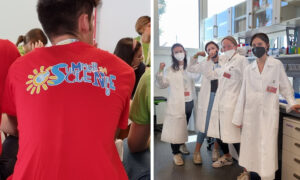
Connections At EMBL Rome, an immersive youth training programme is dedicated to, but also inspired by, alumnus Riccardo Cortese, thanks to private donors.
2024
connections
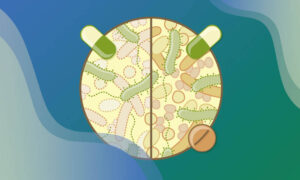
Science & Technology EMBL researchers and their partners have been studying microbial functions and interactions for the benefit of human and planetary health for the last two decades.
2024
science-technology
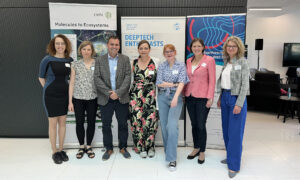
Connections This event bridged research and entrepreneurship, fuelling innovation and discovery. Attendees immersed themselves in insightful discussions and invaluable networking opportunities, inspired to journey from lab research to entrepreneurial success.
2024
connections
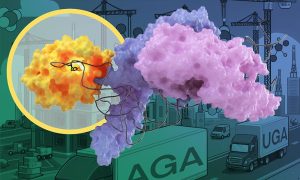
Science & Technology EMBL Grenoble’s Kowalinski Group analysed the structure of an enzyme responsible for modifying tRNA molecules to fine-tune protein production. They discovered that to distinguish almost identical, yet different, tRNA molecules, the enzyme uses help from another enzyme – a type of cooperation…
2024
science-technology

Lab Matters A special Coffee with EMBL session celebrated EMBL’s 50th anniversary by inviting alumni to reflect on the organisation’s first two decades.
2024
lab-matters
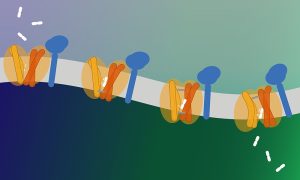
Science & Technology The group of Christian Löw at EMBL Hamburg and CSSB, and collaborators from the Christian-Albrechts-University Kiel and CNRS & Université Paris Cité worked together to reveal the structure and function of a previously unknown lysosome transporter, MFSD1.
2024
science-technology

Technology and innovation A behind-the-scenes look at EMBL-EBI's in-house archive that supports major open data resources and ingests record amounts of data
2024
technology-and-innovation
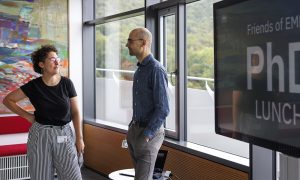
Connections Starting in 2014, Friends of EMBL engages a diverse range of individuals to support and connect with EMBL research. Through unique events and philanthropic contributions, members play a vital role in fostering a stronger bond between EMBL and society.
2024
connections
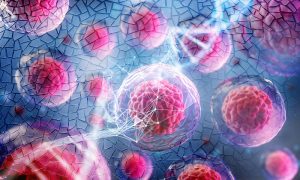
Science & Technology Blood stem cells from healthy people carry major chromosomal alterations, a study in Nature Genetics by researchers at the Max Delbrück Center and the European Molecular Biology Laboratory (EMBL) finds. The discovery suggests that we are all genetic mosaics, which may contribute to ageing-related…
2024
science-technology

Updates from data resources The latest DECIPHER release includes AlphaMissense scores, links to the Open Targets Platform and more.
2024
updates-from-data-resources

Updates from data resources The latest Expression Atlas 40 release is now live, containing new RNA-seq datasets, including a featured experiment resulting from a collaboration with Genotype Tissue Expression (GTEx) project as well as new proteomics data derived from our collaboration with PRIDE. In total, this release…
2024
updates-from-data-resources

Updates from data resources Ensembl 112 and the corresponding release of Ensembl Genomes 59 has released. This includes exciting new fish species, many more drosophila species and new VEP updates.
2024
updates-from-data-resources
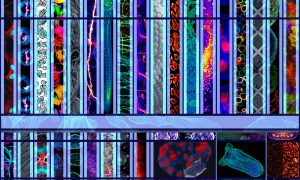
Connections A bold vision to build a centre of excellence for imaging captured the imagination and support from private and public donors to help create the EMBL Imaging Centre.
2024
connections
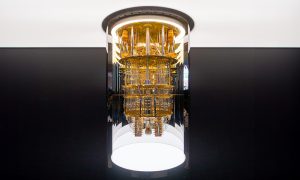
Announcements, Science & Technology Experts in quantum computing and genomics to develop new methods and algorithms to process biological data.
2024
announcementsscience-technology
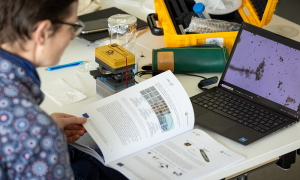
Lab Matters BIOcean5D is an EMBL-coordinated project co-funded by the European Union that unites 31 institutes to address pressing global challenges on marine biodiversity.
2024
lab-matters
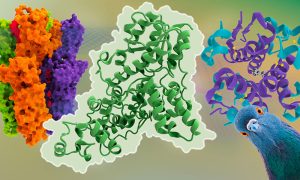
EMBL Announcements New project will help inform and educate young people about the important roles proteins play in nature, health, and disease, as part of EMBL’s 50th anniversary celebrations.
2024
embl-announcements
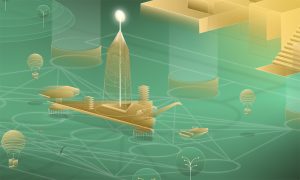
Science & Technology A recent EMBO | EMBL conference provided a forum for researchers to share how AI is making a difference in biology and bioinformatics.
2024
science-technology

Updates from data resources The latest DECIPHER update, version 11.25, introduces new key features including the integration of functional data from multiplexed assays of variant effect (MAVEs) and much more.
2024
updates-from-data-resources

Updates from data resources The SARS-CoV-2 Data Hubs are a set of tools coupled with infrastructure that support four components: the submission, analysis, presentation and visualisation of SARS-CoV-2 raw read data, and its resulting analyses. What makes Data Hubs attractive is a unique set of features: A new publication in…
2024
updates-from-data-resources
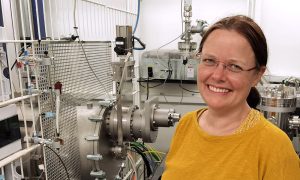
Connections, Lab Matters The Environmental Research Initiative is a community effort of donations empowering EMBL scientists to solve global environmental challenges through molecular biology.
2024
connectionslab-matters

Lab Matters, People & Perspectives, Perspectives The first EMBL-UNESCO infection biology research fellows share observations after residencies with EMBL researchers.
2024
lab-matterspeople-perspectivesperspectives

Updates from data resources The MGnify data resource for microbiome data has launched the latest MGnify Genomes catalogue comprising 112,951 genomes derived from mouse gut datasets, represented by 2,847 species-level cluster representative genomes. This catalogue was generated as part of our work with the MRC funded…
2024
updates-from-data-resources
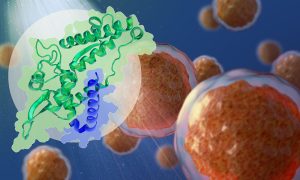
Science, Science & Technology A new study from the Bhogaraju Group at EMBL Grenoble reveals how the cancer-promoting MAGE family of proteins bind to their targets, aiding the development of anti-cancer drugs that target these proteins.
2024
sciencescience-technology

Announcements The Federated European Genome-phenome Archive (FEGA) marks a significant milestone with the release of its first datasets.
2024
announcements

Alumni, EMBL Announcements Two former EMBL scientists have been recognised for their outstanding contributions to research and leadership capabilities in the fields of evolutionary cell biology and molecular medicine.
2024
alumniembl-announcements

Updates from data resources Version 11.24 of DECIPHER introduces a new ACMG/AMP pathogenicity interface for sequence variant predictions, displays ClinGen Variant Curation Expert Panel recommendations on gene pages, and updates ACMG secondary finding information to v3.2.
2024
updates-from-data-resources
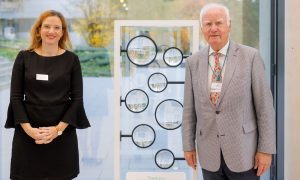
Connections, Lab Matters The Fuchs Fund, started by Lilo and Manfred Fuchs in 2017, has become a lifeline for EMBL students facing adversity during their PhD journeys.
2024
connectionslab-matters

Updates from data resources New Europe PMC tools support preprint review discovery
2024
updates-from-data-resources

Updates from data resources InterPro version 98.0 and InterProScan 5.66-98.0 are now available. InterPro now features hundreds of new methods integrated from partner databases, and InterProScan draws on over 40000 entries. InterPro version 98.0 New features include: InterPro 98.0 covers 81.7% of UniProt Knowledgebase release…
2024
updates-from-data-resources

Connections, Lab Matters A pivotal conversation 20 years ago led to the creation of the iconic 'double-helix building' that is EMBL's Advanced Training Centre.
2024
connectionslab-matters
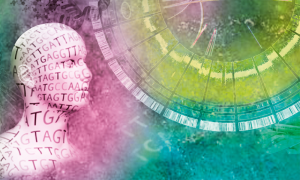
Events, Science & Technology Approximately 300 scientists met up at EMBL Heidelberg to unravel the centuries-old puzzle of cancer through the modern lens of genomics.
2024
eventsscience-technology
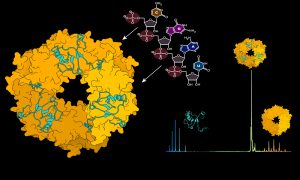
Science, Science & Technology The Kosinski Group at EMBL Hamburg collaborated with other groups in Hamburg to reveal critical steps in Lassa virus ribonucleoparticle assembly and recruitment, and the crucial role played by RNA in in the Lassa virus life cycle.
2023
sciencescience-technology
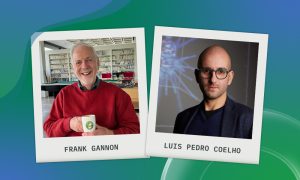
Alumni, Lab Matters A recent success story of the Alumni Mentorship Programme is that of Luis Pedro Coelho, a Portuguese former postdoctoral fellow in the Bork Group, and his mentor Frank Gannon, former EMBO Director and EMBL Group Leader and Senior Scientist.
2023
alumnilab-matters

Alumni, People & Perspectives EMBL alumnus Roel Wijnaendts looks back at a long career in academic research and entrepreneurship that has left an indelible mark in the fields of instrumentation and optics.
2023
alumnipeople-perspectives

Updates from data resources Two new data portals are set to support infectious disease monitoring and research across Europe; the Swedish Pathogens Data Portal and the Netherlands COVID-19 Data Portal.
2023
updates-from-data-resources

EMBLetc Sara Fahs, who did her PhD from EMBL Heidelberg and is one of the newest members of the EMBL alumni association board, writes about key insights from her journey in science and her work on medicinal chemistry, during a career spanning academia and industry.
2023

EMBLetc The EMBL agreement, which made reality the idea of creating a European laboratory for life sciences, was signed in 1973 and ratified in 1974. Fifty years later, we look back at this historic moment.
2023
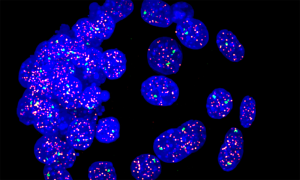
Events, Science & Technology A recent EMBO | EMBL symposium brought together leading developers of imaging methods with cutting-edge applications that illustrate how imaging can answer biological questions.
2023
eventsscience-technology

Updates from data resources InterPro version 97.0 and InterProScan 5.64-97.0 are now available. InterPro now features hundreds of new methods integrated from partner databases, and InterProScan draws on over 40000 entries.
2023
updates-from-data-resources
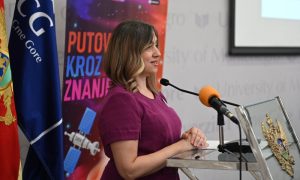
Connections, Events EMBL participated in the recent Science and Innovation Days in Podgorica, Montenegro, sharing its passion for knowledge and curiosity.
2023
connectionsevents
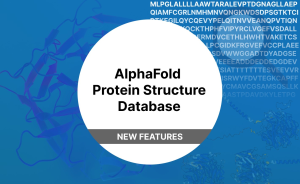
Updates from data resources In response to user community demands, the AlphaFold Protein Structure database has introduced sequence-based search and cluster members.
2023
updates-from-data-resources

Events, Science & Technology Here are six takeaways from a recent EMBO/EMBL symposium that brought together scientists to discuss the state of research involving the human microbiome and its connection to health and disease.
2023
eventsscience-technology
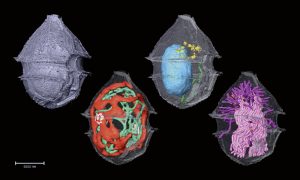
Science, Science & Technology A new method developed by EMBL scientists can help us identify and investigate plankton species in field samples with greater speed, accuracy, and resolution than ever possible before.
2023
sciencescience-technology

Updates from data resources InterPro version 96.0 and InterProScan 5.64-96.0 are now available.
2023
updates-from-data-resources
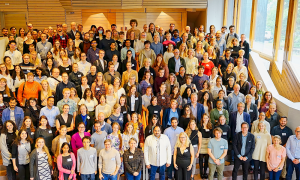
Connections, Lab Matters The 12th annual meeting of the Nordic EMBL Partnership for Molecular Medicine took place in Espoo, Finland, between 11-14 September 2023.
2023
connectionslab-matters
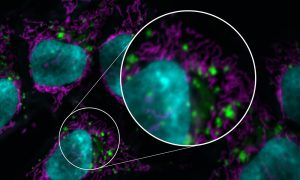
Science, Science & Technology A working group of researchers from the QUAREP-LiMi initiative has developed global guidelines to improve the quality of microscopy data and images published in scientific publications.
2023
sciencescience-technology

Lab Matters Learn more about the game-based workshop that lets participants experience what it feels like to be a researcher on the TREC expedition.
2023
lab-matters

Announcements, EMBL Announcements, Lab Matters EMBL Director General and Deputy Director General respond to the announcement by the European Commission and UK Government
2023
announcementsembl-announcementslab-matters
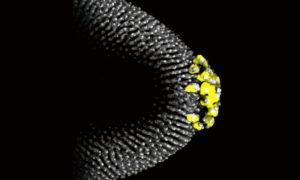
Picture of the week, Science, Science & Technology For a fruit fly embryo to develop correctly, key factors need to get to the right place at the right time – a journey that starts in the developing egg, as seen in this image from the Ephrussi Group at EMBL Heidelberg
2023
picture-of-the-weeksciencescience-technology

Updates from data resources Ensembl 100 release brings exciting updates, such as the addition of regulation data to 5 animal genomes studied extensively in agriculture.
2023
updates-from-data-resources

EMBLetc Veli Vural Uslu, winner of the 2023 John Kendrew award, chats about his journey in science and his adventures in science communication. Uslu is the writer, director, and organiser of various science-themed theatre plays, and the founder of TAP (The Awesome Potatoes) Science Theater Heidelberg.
2023
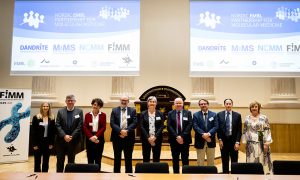
Connections, Lab Matters The Nordic EMBL Partnership for Molecular Medicine celebrates the signing of its renewed ten years agreement between EMBL and the Universities of Aarhus, Oslo, Umeå, and Helsinki.
2023
connectionslab-matters

Events, Lab Matters On Friday 21 April 2023, EMBL held a graduation ceremony to celebrate its newest group of PhDs who graduated during the last 12 months. The graduating class comprised 43 fellows representing 17 nationalities and all six EMBL sites.
2023
eventslab-matters

Alumni Two former EMBL scientists have been recognised for their outstanding contributions to the fields of science communication and multiple sequence alignment research, respectively.
2023
alumni
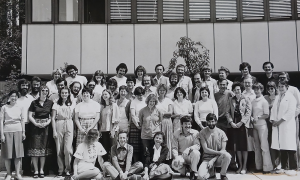
Lab Matters On the occasion of International Women’s Day 2023, EMBL archivist Maria Papanikolaou discusses the traces left by the women in science who have passed through EMBL, irrevocably changing the organisation in small and big ways.
2023
lab-matters

Updates from data resources InterPro now features hundreds of new methods integrated from partner databases, and InterProScan draws on over 38,000 entries. InterPro version 93.0 InterPro 93.0 integrates 300 new methods from the CDD (261), PANTHER (12), PROSITE profiles (17), SMART (9), TIGRFAMs (1) databases, and covers 81.7%…
2023
updates-from-data-resources

Perspectives, Science Why open data from model organisms is essential for rare disease research.
2023
perspectivesscience
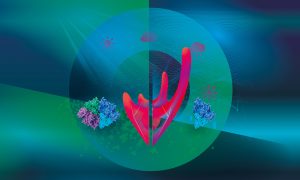
Events A recent EMBO|EMBL symposium provided a forum for discussing recent research on a range of issues for organisms as they cope with changing environments.
2022
events

EMBLetc Sara A. Courtneidge, recipient of the 2022 Lennart Philipson Award, reflects on the fundamental and translational research aspects of her career in cancer research
2022

Lab Matters, People & Perspectives Newly appointed member of the ASAPbio Board of Directors, EMBL Group Leader Gautam Dey speaks about preprints, data management, and open science.
2022
lab-matterspeople-perspectives
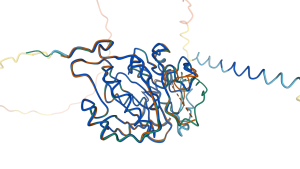
Updates from data resources You can now superpose AlphaFold models onto PDB structures at the touch of a button using the PDBe-KB aggregated views of proteins.
2022
updates-from-data-resources

Updates from data resources We are pleased to announce the release of Ensembl 108, and the corresponding release of Ensembl Genomes 55 featuring changes in the human default tracks, new genomes in Ensembl Plants and Ensembl Metazoa, and the addition of mitochondrial annotation for Tasmanian devil. Genome assemblies and…
2022
updates-from-data-resources

Updates from data resources We are pleased to announce the release of InterPro 91.0 and InterProScan 5.59-91.0
2022
updates-from-data-resources
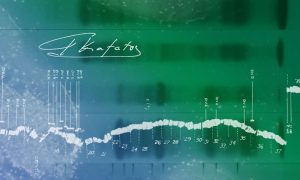
Alumni EMBL´s Inaugural Kafatos Lecture brings outstanding science to the global public. The 2022 lecture will be delivered by EMBL alumnus and distinguished developmental geneticist Denis Duboule and will focus on ‘Evolution and Embryonic Development: The Complex Story of our Dual Origins’.
2022
alumni

Alumni, EMBL Announcements Two former EMBL staff members have been recognised for their outstanding contributions to research in the fields of brain evolution and cancer.
2022
alumniembl-announcements

Lab Matters, People & Perspectives EMBO Director Fiona Watt discusses preprints, data sharing, and evaluation in light of EMBL’s new Open Science policy
2022
lab-matterspeople-perspectives
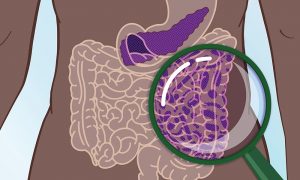
Science, Science & Technology A molecular signature of 27 microorganisms in stool defines the high-risk population for the most common pancreatic cancer and could be used for early detection of the disease.
2022
sciencescience-technology
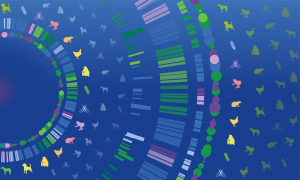
Perspectives, Science, Science & Technology An exploration of where in the world genomics methods are applied and where the data are used.
2022
perspectivessciencescience-technology
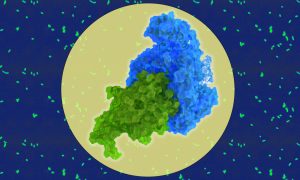
Science, Science & Technology Using cryo-EM and structural biology techniques, EMBL researchers have shown how two proteins of Legionella pneumophila interact. This finding sheds light on a mechanism critical to the infection process and could lead to the development of new drugs to treat pneumonia.
2021
sciencescience-technology

Alumni, EMBL Announcements EMBL alumnus Denis Duboule has been selected as the speaker for the inaugural Kafatos Lecture to take place in October 2022.
2021
alumniembl-announcements

Alumni, Science & Technology An alumnus reflects on the reptile database he started in 1996 while at EMBL. The database helps understand biodiversity issues.
2021
alumniscience-technology

Alumni, EMBL Announcements A new life sciences lecture series commemorates the legacy of former EMBL Director General Fotis Kafatos for people around the world.
2021
alumniembl-announcements

Alumni, Science & Technology EMBL alum Lara Urban has developed mobile DNA approaches to monitor impacts upon biodiversity in remote areas of New Zealand and elsewhere.
2021
alumniscience-technology
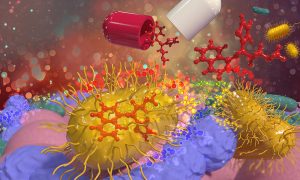
Science, Science & Technology A new collaborative study led by EMBL group leaders Kiran Patil, Nassos Typas, and Peer Bork has found that common medications accumulate in human gut bacteria. This process reduces drug effectiveness and affects the metabolism of common gut microbes, thereby altering the gut microbiome.
2021
sciencescience-technology
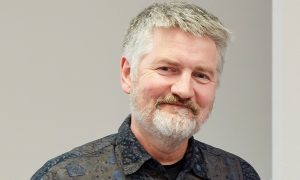
Alumni, People & Perspectives EMBL alumnus Angus Lamond reflects on the process of translating the importance of fundamental research – to EMBL and wider society.
2021
alumnipeople-perspectives

Alumni, Science & Technology A community of scientists is looking at the estimated three billion heart muscle cells in a human heart to better understand heart disease.
2021
alumniscience-technology
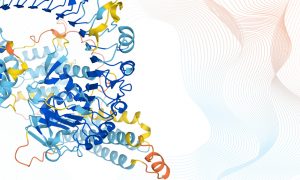
Science, Science & Technology DeepMind and EMBL-EBI to make millions of protein structure predictions freely available to the scientific community.
2021
sciencescience-technology
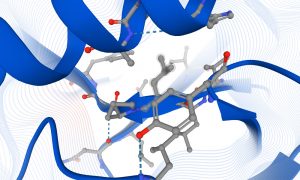
Science, Science & Technology A discussion of the applications that AlphaFold DB may enable and the possible impact of the resource on science and society.
2021
sciencescience-technology

Alumni, People & Perspectives EMBL alumni Ilaria Piazza and Ken Holmes have been recognised for their outstanding contributions, and will receive their awards as part of the celebrations for EMBL World Alumni Day.
2021
alumnipeople-perspectives

Science, Science & Technology Researchers investigate how external factors can influence the persistence of microbe species in the human gut
2021
sciencescience-technology

Lab Matters, People & Perspectives EMBL Director Matthias Hentze describes the Environmental Research Initiative: a community effort to solve global environmental challenges.
2021
lab-matterspeople-perspectives
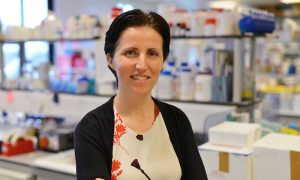
Lab Matters In a talk on 29 April, Professor Jeanette Woolard will share her experience of creating a more positive research culture
2021
lab-matters

Lab Matters Members of EMBL’s Equality, Diversity and Inclusion Committee explain how EMBL is choosing to challenge through its LEAP mentoring programme.
2021
lab-matters
Science, Science & Technology Scientists in the Stegle group and colleagues have studied induced pluripotent stem cells from around 1,000 donors to identify correlations between individual genetic variants and altered gene expression. They linked more than 4,000 of the genetic variants responsible for altered expression…
2021
sciencescience-technology
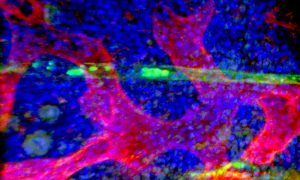
Science, Science & Technology A new method has the potential to boost international research efforts to find drugs that eradicate cancer at its source.
2021
sciencescience-technology
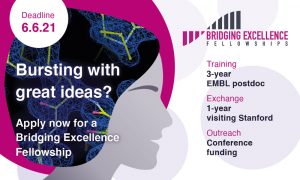
EMBL Announcements, Lab Matters Applications are now open for the Life Science Alliance’s Bridging Excellence Fellowships, enabling postdocs to carry out collaborative projects at EMBL and Stanford University.
2021
embl-announcementslab-matters
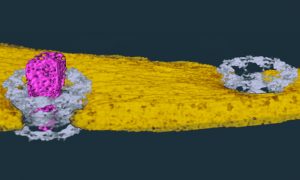
Science, Science & Technology Researchers from EMBL and Heidelberg University Hospital combine high-resolution imaging to observe the infection process in cell nuclei, opening the door for new therapeutics.
2021
sciencescience-technology

Lab Matters Roshni Mooneeram discusses what Equality, Diversity and Inclusion (EDI) is to her, and what the meaning of allyship is.
2021
lab-matters
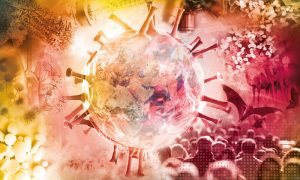
People & Perspectives, Science Understanding why disagreement is good for COVID science. EMBL Deputy Director General Ewan Birney offers tips for sorting through the discourse.
2021
people-perspectivesscience
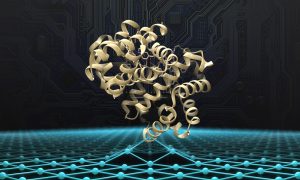
Science, Science & Technology How artificial intelligence can help us solve the mysteries of the protein universe
2020
sciencescience-technology

EMBL Announcements, Lab Matters EMBL’s Eileen Furlong, Chair of the Equality and Diversity Committee and Head of the Genome Biology Unit, responds to the recent Nature Comms paper on the potential effects of mentor–mentee relationships.
2020
embl-announcementslab-matters
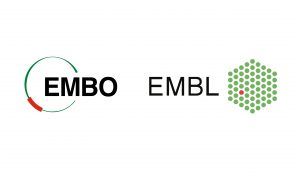
Lab Matters, People & Perspectives EMBL Director General Edith Heard and EMBO Director Maria Leptin respond to the current proposal on the Multiannual Financial Framework.
2020
lab-matterspeople-perspectives

EMBL Announcements, Lab Matters EMBL Director General Edith Heard responds to the resignation of the President of the European Research Council (ERC)
2020
embl-announcementslab-matters
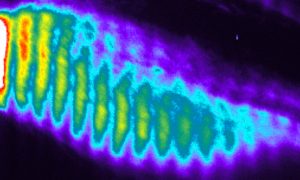
Science, Science & Technology EMBL scientists examine the molecular causes of a rare hereditary disease of the spine and ribs
2020
sciencescience-technology

EMBL Announcements, Lab Matters EMBL is committed to providing a safe and healthy working environment for our staff and visitors.
2020
embl-announcementslab-matters

EMBL Announcements, Lab Matters The call for applications for Bridging Excellence Fellowships is now open
2020
embl-announcementslab-matters
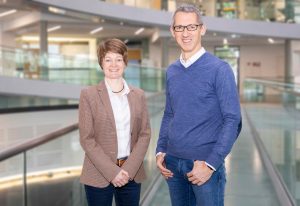
Lab Matters EMBL’s Jan Ellenberg reflects on the process of forming a European research infrastructure
2019
lab-matters
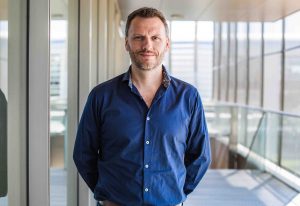
Events, People & Perspectives On microbiomes, public engagement and not being boring
2019
eventspeople-perspectives
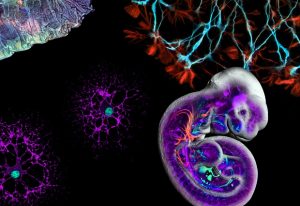
Connections, Lab Matters Euro-BioImaging now established as a European Research Infrastructure Consortium
2019
connectionslab-matters

Alumni, People & Perspectives Nadia Rosenthal describes how she built EMBL Rome’s mouse house
2019
alumnipeople-perspectives

EMBL Announcements, Events When: Friday, 4 October at 16:30 – 18:00. Where: The press conference will be held on the Tara schooner at the Port Olímpic in Barcelona. What: A press conference on the new Tara mission on microplastics and Tara’s cooperation with EMBL.…
2019
embl-announcementsevents
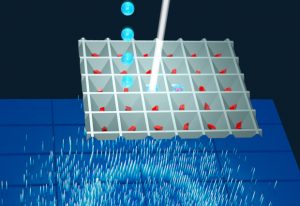
Science, Science & Technology Researchers from Hamburg simplify time-resolved X-ray crystallography
2019
sciencescience-technology
EMBL Announcements, Events What: A press conference on the new Tara mission on microplastics and the Tara Ocean Foundation’s cooperation with EMBL. The press briefing will be followed by a visit to the schooner.When: Friday 27 September at 13:00 CEST.Where: The press conference will be held on the Tara…
2019
embl-announcementsevents
EMBL Announcements, Events When: Friday 13 September at 14:30.Where: The press conference will be held on the Tara schooner at the Porto Turistico di Roma (Lungomare Duca degli Abruzzi, 84, 00121 Roma RM, Italy).What: A press conference on the new Tara mission on microplastics and the Tara Ocean Foundation’s…
2019
embl-announcementsevents

Alumni, EMBL Announcements Bernd-Uwe Jahn, former EMBL Administrative Director, Ministerialrat and Jurist has passed away
2019
alumniembl-announcements

Alumni, EMBL Announcements The life science community is deeply saddened by the death of Suzanne Eaton
2019
alumniembl-announcements

Connections, Lab Matters Joining forces to support early-career scientists
2019
connectionslab-matters

Science, Science & Technology Using genomics to help endangered species
2019
sciencescience-technology

Lab Matters, People & Perspectives The head of EMBL’s Barcelona site joins a prestigious group of more than 1800 scientists worldwide
2019
lab-matterspeople-perspectives
EMBL Announcements, Events When: Monday 17 June at 10:30Where: The press conference will be held on the Tara schooner at the Sandtorhafen in the Hamburg harbourWhat: A press conference on the new Tara mission on microplastics and Tara’s cooperation with EMBL. A tour of the schooner will be organised with the…
2019
embl-announcementsevents

Science, Science & Technology Results from the Tara Oceans expedition reveal the Arctic Ocean as a cradle of viral biodiversity
2019
sciencescience-technology
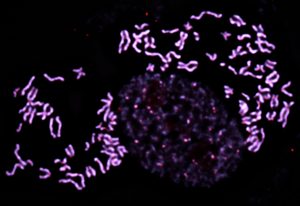
Science, Science & Technology Thorough characterisation of structural variants in human genomes
2019
sciencescience-technology
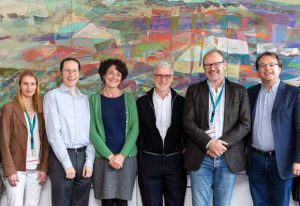
Lab Matters The Nordic EMBL Partnership directors discuss the value of collaborating across borders
2019
lab-matters
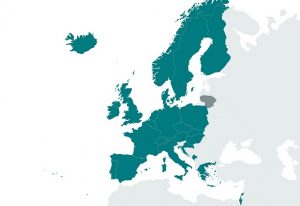
Lab Matters The Francis Crick Institute and EMBL have agreed to work together to strengthen European science
2019
lab-matters
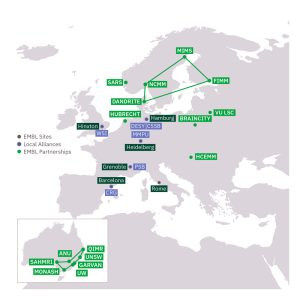
Lab Matters EMBL’s Plamena Markova reflects on the EMBL Partnership Programme
2019
lab-matters

Connections, Lab Matters On 5 February 2019, EMBL welcomed Poland as its 26th member state
2019
connectionslab-matters
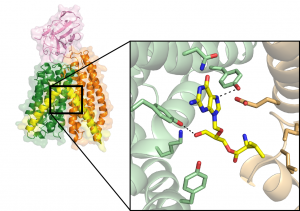
Science, Science & Technology Scientists develop structural model that could help in the development of drugs with increased absorption rates
2019
sciencescience-technology
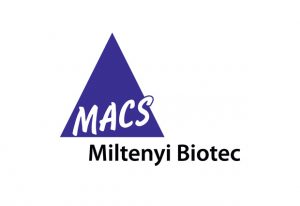
Connections, Lab Matters Joining forces to advance training in biomedical research and therapy
2019
connectionslab-matters

Lab Matters, People & Perspectives EMBL’s Design Team Lead on translating scientific discoveries into visual designs
2018
lab-matterspeople-perspectives
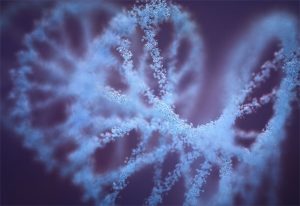
Science, Science & Technology Cancer researchers have developed a computer model to predict the course of disease for prostate cancer
2018
sciencescience-technology
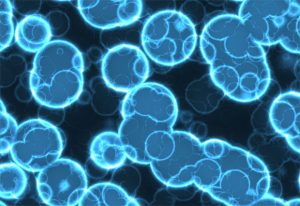
Science, Science & Technology Researchers develop new method to analyse the entire protein-RNA network of the cell
2018
sciencescience-technology

Events, Lab Matters EMBL postdocs discover industry-led research opportunities at the Corporate Summer School
2018
eventslab-matters
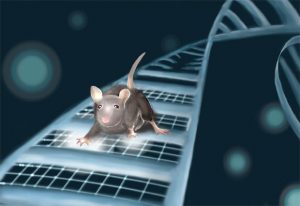
Science, Science & Technology Scientists uncover effects of mutation that can cause autism and intellectual disability
2018
sciencescience-technology
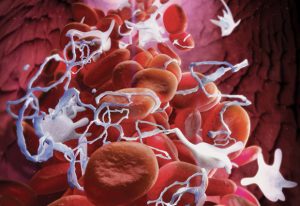
Science, Science & Technology EMBL scientists investigate the structure of a key protein involved in blood clotting
2018
sciencescience-technology
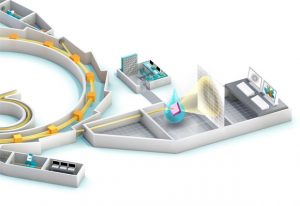
Science, Science & Technology Speeding up time-resolved X-ray crystallography with EMBL beamline P14
2018
sciencescience-technology

Connections, Lab Matters EMBL and Promega collaborate to train young scientists
2018
connectionslab-matters
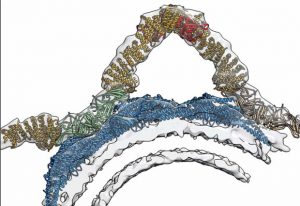
Science, Science & Technology Retromer’s 3D structure improves understanding of cellular sorting and packaging
2018
sciencescience-technology
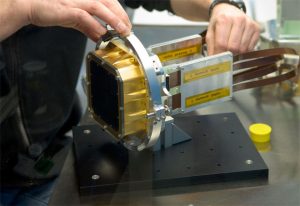
Connections, Lab Matters ATTRACT initiative will fund 170 breakthrough detection and imaging ideas with market potential
2018
connectionslab-matters

Alumni, People & Perspectives Alumni share how joining EMBL’s IT team was a career upgrade
2018
alumnipeople-perspectives

Lab Matters A history of EMBL in six objects from the EMBL Archive
2018
lab-matters
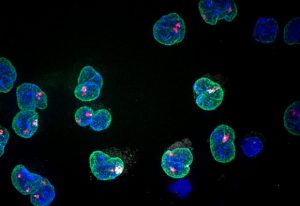
People & Perspectives, Science EMBL’s next Director General reflects on the questions that drive her research
2018
people-perspectivesscience

Alumni, People & Perspectives EMBL alumna Melina Schuh recognised for excellence in science
2018
alumnipeople-perspectives

Alumni, People & Perspectives Elisa Izaurralde, EMBL alumna, has passed away
2018
alumnipeople-perspectives
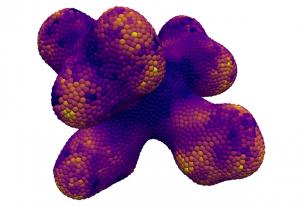
Science, Science & Technology Discover how EMBL scientists are using GPU computing to push biology forward
2018
sciencescience-technology
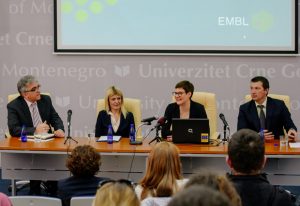
Connections, Lab Matters Montenegro’s Minister of Science discusses the importance of international collaboration in research
2018
connectionslab-matters
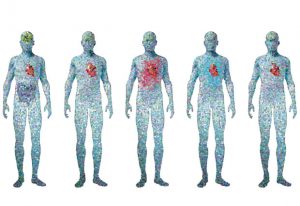
Connections, Lab Matters Following the completion of the Human Genome Project in 2001, scientists and the media described the genome as “the book of life”, holding the answers to the way genes are linked to disease. Yet, seventeen years later, we are still deciphering how cells interpret this book. Since…
2018
connectionslab-matters

Lab Matters, People & Perspectives Maria Leptin reflects on how to create a research environment that serves the needs of the community
2018
lab-matterspeople-perspectives
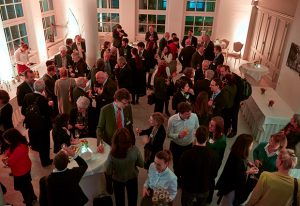
Connections, Events EMBL and EMBO hosted the ERC's Scientific Council in Heidelberg 28 February to 2 March
2018
connectionsevents
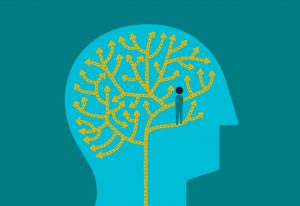
Science, Science & Technology Join us in our new editorial theme as we ask how everything began
2018
sciencescience-technology

Events, Lab Matters EMBL Barcelona organises first school activity to coincide with the International Day of Women in Science
2018
eventslab-matters

Science, Science & Technology How Darwin’s work revealed the intimate relationship between orchids and insects
2018
sciencescience-technology
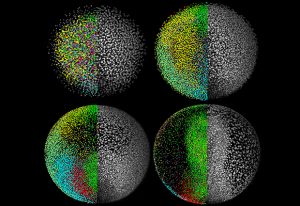
Alumni, People & Perspectives EMBL physicist-turned-biologist alumni win 2017 Kendrew and Phillipson awards
2017
alumnipeople-perspectives

Events, Lab Matters 20,000 visitors get sneak peek at giant particle accelerators at DESY DAY in Hamburg
2017
eventslab-matters

Alumni, People & Perspectives Former EMBL Director General Fotis Kafatos passes away
2017
alumnipeople-perspectives
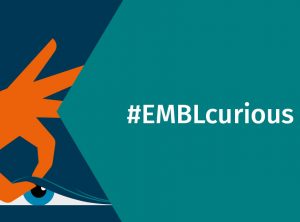
Lab Matters, People & Perspectives Six curious questions and the EMBL community's answers. Check back each week for the next question
2017
lab-matterspeople-perspectives

Alumni, People & Perspectives Jacques Dubochet, Nobel laureate and former EMBL group leader, reflects on a key aha moment
2017
alumnipeople-perspectives

Science, Science & Technology Find out how curiosity is driving some of the work we do here at EMBL
2017
sciencescience-technology

Connections, Lab Matters How Australia’s associate membership of EMBL empowers scientists and drives collaboration
2017
connectionslab-matters

Connections, Lab Matters Bernt Eric Uhlin, Director of MIMS, will replace Kjetil Taskén, Director of NCMM
2017
connectionslab-matters
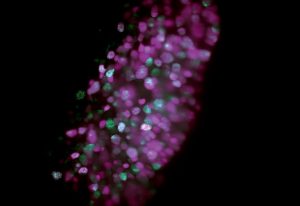
Connections, Events Lars Steinmetz. Director of the Life Science Alliance, reflects on the EMBL|Stanford initiative
2017
connectionsevents
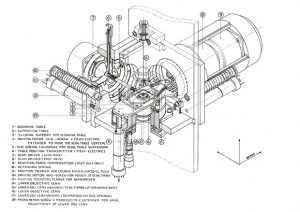
Lab Matters, People & Perspectives Biologists Sydney Brenner and Richard J. Roberts addressed the importance of scientific archives
2017
lab-matterspeople-perspectives
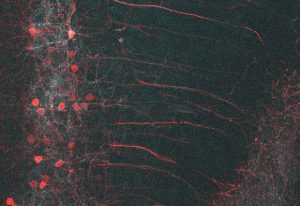
Science, Science & Technology EMBL’s Cornelius Gross wants to understand fear responses and the brain circuitry that governs them
2017
sciencescience-technology
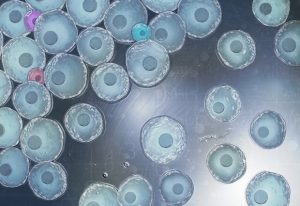
Science, Science & Technology Two EMBL researchers are exploring new ways to filter out noise and get to the data they need
2017
sciencescience-technology

Science, Science & Technology EMBL’s Hiroki Asari investigates how our internal state can change the way our eyes work
2017
sciencescience-technology

Alumni, People & Perspectives The life science community is deeply saddened by the loss of EMBL alumnus Riccardo Cortese
2017
alumnipeople-perspectives

Lab Matters, People & Perspectives EMBL alumnus Konrad Müller has sadly passed away
2017
lab-matterspeople-perspectives
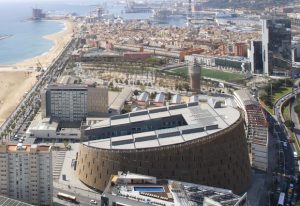
Lab Matters Silke Schumacher explains how the new EMBL site in Barcelona came into being
2017
lab-matters

Lab Matters, People & Perspectives Anna Tramontano, bioinformatics pioneer and EMBL alumna, has passed away
2017
lab-matterspeople-perspectives

Lab Matters, People & Perspectives Janet Thornton reflects on the contributions of EMBL alumna Anna Tramontano
2017
lab-matterspeople-perspectives

Alumni, People & Perspectives The research community mourns the passing of Anna Tramontano
2017
alumnipeople-perspectives

Lab Matters Ottoline Leyser on the fallacy of failure and the road to self-determination
2017
lab-matters

Alumni, People & Perspectives EMBL alumna Nicola Mulder reflects on her pan-African bioinformatics project and its impact
2017
alumnipeople-perspectives
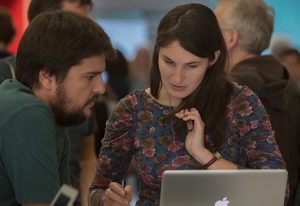
Connections, Lab Matters EMBL recently attended the Naturejobs Career Expo, advising scientists about their career options
2016
connectionslab-matters

Lab Matters, Science & Technology CORBEL Open Call launches October 2016, for access to 15 facilities and 8 research infrastructures
2016
lab-mattersscience-technology
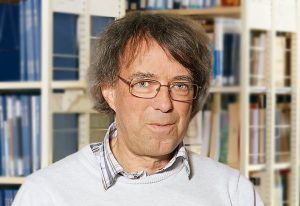
Lab Matters, People & Perspectives Stephen Cusack looks back on the early days of his collaboration with Anacor developing anti-infectives
2016
lab-matterspeople-perspectives
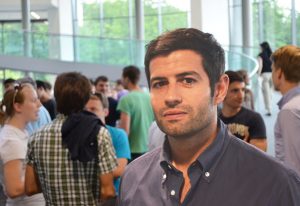
Lab Matters, People & Perspectives Andrés Palencia on the design of compounds that may help fight drug-resistant TB and more
2016
lab-matterspeople-perspectives

Connections, Lab Matters Celebrating the rich history of scientific contributions in Malta, EMBL's newest member state
2016
connectionslab-matters
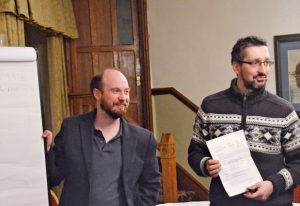
Alumni, People & Perspectives Scientific community manager, alumnus Aidan Budd, connects people with shared interests, values, goals
2016
alumnipeople-perspectives
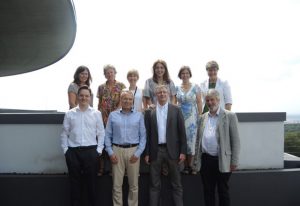
Alumni, EMBL Announcements EMBL Alumni Association Board review progress and discuss new initiatives
2016
alumniembl-announcements
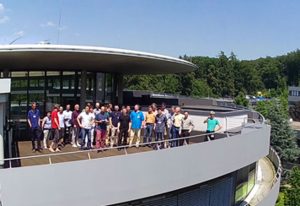
Alumni, Lab Matters 27 former Bork lab members joined Peer for a full-day get-together this summer
2016
alumnilab-matters
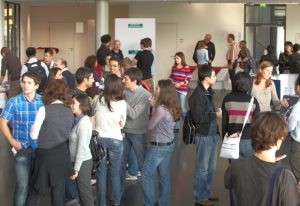
Science, Science & Technology From shared interests at a conference to a surprising discovery
2016
sciencescience-technology

Events, People & Perspectives Neuroscientist and comedian Sophie Scott explains the complexity and social importance of laughter
2016
eventspeople-perspectives

Lab Matters, People & Perspectives Illustrator Edmond Baudoin donates an original artwork to the EMBL Archive
2016
lab-matterspeople-perspectives
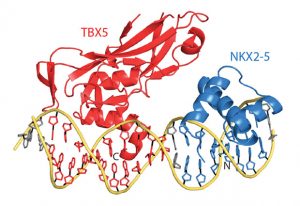
Science, Science & Technology How transcription factors interact to create a heart
2016
sciencescience-technology
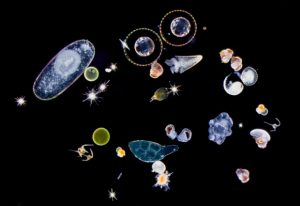
Science, Science & Technology Plankton network linked to ocean's biological carbon pump revealed
2016
sciencescience-technology
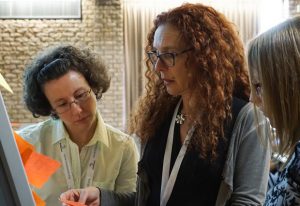
Connections, Events GOBLET initiative supports pan-African bioinformatics trainers in Cape Town.
2015
connectionsevents

People & Perspectives, Science & Technology What really sets humans apart? Forming societies, teaching and compassion, says Agustin Fuentes.
2015
people-perspectivesscience-technology

Lab Matters, People & Perspectives Ewan Birney on the risks, rewards and realities of studying humans as a model species.
2015
lab-matterspeople-perspectives

Lab Matters Halldór Stefánsson on the long history of complex interactions between humans and animals.
2015
lab-matters

Lab Matters Giuseppe Testa reflects on the myriad intersections of our digital and biological lives.
2015
lab-matters

Lab Matters, People & Perspectives Postdoc Thibaut Brunet reviews two popular science books that explore the rise of Homo sapiens.
2015
lab-matterspeople-perspectives
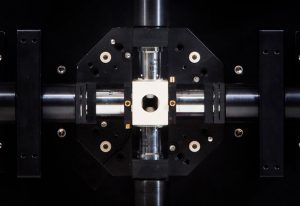
Lab Matters, Science & Technology A microscopy technique is poised to shine new light on biological questions: as sheets of light can scan everything from developing embryos to single cells or functioning brains, a technique called light-sheet microscopy is gaining traction. It enables scientists to observe living cells in three…
2015
lab-mattersscience-technology
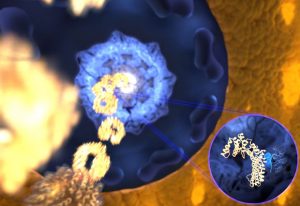
Science, Science & Technology Spaghetti-like proteins are surprisingly effective 'keys'
2015
sciencescience-technology
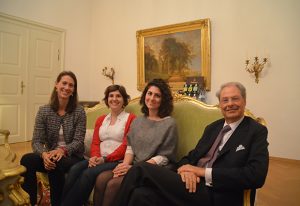
Connections, Lab Matters Amidst the excitement of Nobel Week, behind the scenes of the annual Lindau Nobel Laureate Meetings.
2015
connectionslab-matters

Alumni, Lab Matters Ephrussi group alumni reunite in Heidelberg for a surprise birthday celebration.
2015
alumnilab-matters

Alumni, People & Perspectives EMBL rewards the special work of alumni through the John Kendrew and Lennart Philipson awards.
2015
alumnipeople-perspectives

Lab Matters, People & Perspectives Janet Thornton reflects on her time as Director of one of Europe’s fastest growing research institutes.
2015
lab-matterspeople-perspectives
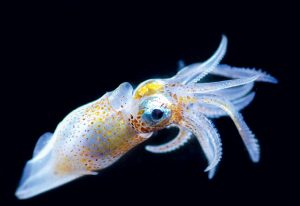
Science, Science & Technology A journalist who spent six weeks aboard Tara reflects on the expedition’s extraordinary outcomes.
2015
sciencescience-technology

Lab Matters What’s on your Summer reading list? Here are some favourites of staff in the Lab.
2015
lab-matters

Events, Lab Matters A contagious cancer threatens the Tasmanian devil – extract from Science in School journal.
2015
eventslab-matters
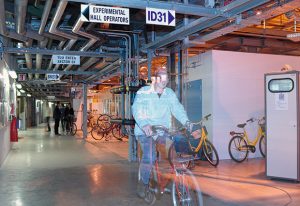
Alumni, People & Perspectives Alumni Reuben Leberman, Jeremy Smith, Elena Seiradake, and Winfried Weissenhorn share their stories.
2015
alumnipeople-perspectives

Lab Matters, People & Perspectives Database administrator's photo essay reflects internationality and personality of the Genome Campus.
2015
lab-matterspeople-perspectives
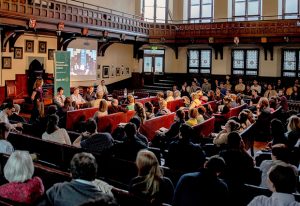
Events EMBL-EBI organises an evening of talks and discussion about the global spread of infectious disease.
2015
events
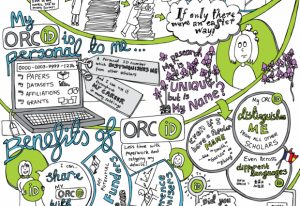
Lab Matters Jenny Cham blogs about how ORCID helps distinguish her from all the other Jenny Chams in the world.
2015
lab-matters

Lab Matters ELIXIR receives major Horizon 2020 funding to ‘EXCELERATE' activities over the next four years.
2015
lab-matters
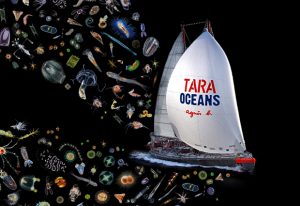
Science Tara Oceans results reveal climate change insights, and a treasure trove of novel species and genes.
2015
science

Alumni Career insights from Riccardo Cortese, whose start-up is developing an Ebola vaccine candidate.
2015
alumni
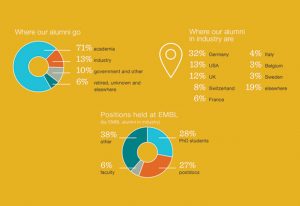
Alumni Alumni in senior positions in industry share career challenges, highlights and EMBL’s continuing role.
2015
alumni

Lab Matters Q&A: Which analogy best describes your research?
2015
lab-matters

Events Ben Lillie takes us on a journey through the art and craft of personal narrative.
2015
events

Alumni Exploring the science and magic of Lil Bub – alumna launches project to sequence the ‘Lilbubome’.
2015
alumni

Lab Matters Klaus Tschira, a tireless supporter of science, education and talent, died 31 March 2015.
2015
lab-matters
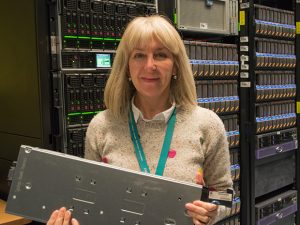
Lab Matters A blog extract by Ewan Birney reflects on the challenges of moving a massive data-centre.
2015
lab-matters
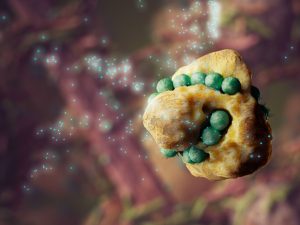
Alumni Films by alumnus’ lab shortlisted for 2014 Visualisation Challenge, 'The Vizzies'.
2015
alumni

Alumni How the Rosetta Mission’s comet landing led to unexpected destinations for alumna Karin Ranero,
2015
alumni

Lab Matters Which tales have illuminated something important to you? Staff from the Lab provide their favourite.
2015
lab-matters

Science From using light to control brain activity to illuminating fruit fly development and mice’s sense of touch
2015
science
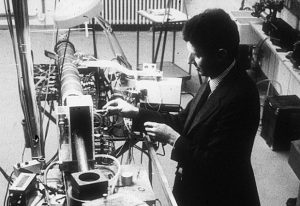
Alumni Ken Holmes, one of the visionaries behind EMBL and EMBL Hamburg, looks back to where it all began.
2015
alumni
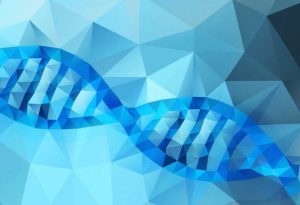
Lab Matters EMBL-EBI supports relaunch of yourgenome.org, to bring genetics advances to a wider audience.
2015
lab-matters
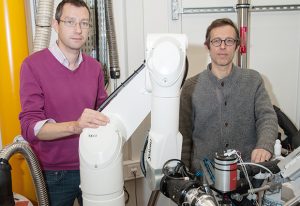
Science In two months, 2.3 million diffraction images collected on new, fully automated ESRF/EMBL beamline.
2014
science

Alumni Get a flavour of the 15th EMBL|EMBO Science and Society Conference from alumnus Freddy Frischknecht.
2014
alumni
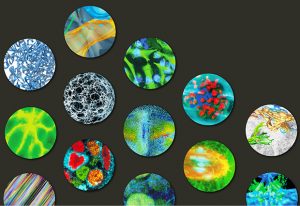
Events Which courses and conferences will you attend in 2015? EMBL’s annual event calendar: out now!
2014
events

Events In a Statement of Intent signed this month, Poland becomes a prospect member state of EMBL, and the new partners agree to explore possibilities for long-term cooperation, with a view to the country becoming a full member state within three years. “Poland has a strong and active life science…
2014
events

Lab Matters Drumming, drama, dancing and discovery in a diary of art and science event, Roche Continents.
2014
lab-matters

Lab Matters Bibliophiles from the Lab pick out the stories that have inspired them at work and elsewhere.
2014
lab-matters
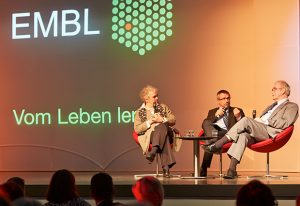
Events German Science Minister and other honoured guests celebrate 40 years of ‘Learning from life’.
2014
events
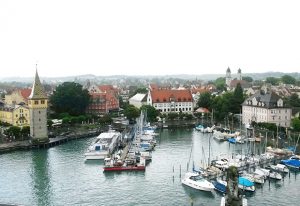
Lab Matters PhD student Charles breeze found inspiration at this year's Lindau Nobel Laureate meeting.
2014
lab-matters
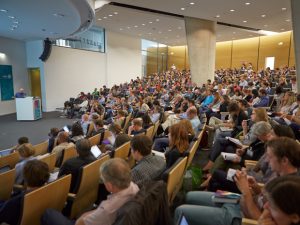
Events Experts from multiple fields come together to understand how the instructions in genes are read
2014
events

Events The European Molecular Biology Laboratory (EMBL) welcomes Hungary as its newest prospect member state. In a Statement of Intent signed this month, Hungary and EMBL agree to explore possibilities for long-term cooperation, with a view to the country becoming a full member state within three years.…
2014
events

Alumni Stephen Fuller, from 1981–2000 an EMBL postdoc, group leader then Head of Unit, died on 25 August.
2014
alumni
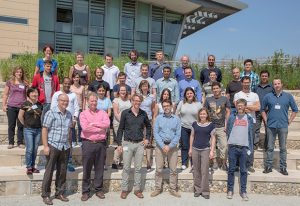
Events EMBL-EBI hosts successful first EMBO Practical Course in Genotype to Phenotype Mapping.
2014
events
2014
events

Lab Matters Andrew D Robertson, scientific coordinator of EICAT between 2011–12, died on 14 August 2014.
2014
lab-matters
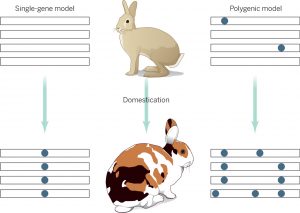
Science Bronwen Aken discusses what research into the rabbit genome reveals about animal domestication.
2014
science
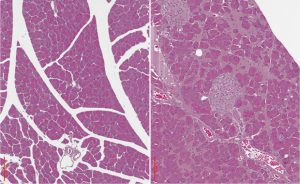
Science A rare form of an iron overload disorder kills pancreatic function, Heidelberg scientists find
2014
science
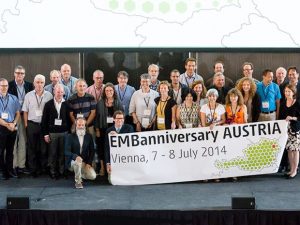
Alumni Celebrating 50 years of EMBO, 40 years of EMBL and the success of molecular biology in Austria
2014
alumni

Lab Matters Film enthusiasts from the Lab review their favourite science movies, one for each EMBL decade
2014
lab-matters

Lab Matters Christian Boulin, EMBL’s Director of Core Facilities and Services, died on 27 April 2014
2014
lab-matters

Lab Matters Which scientific breakthroughs would EMBL scientists most like to see in the next 40 years?
2014
lab-matters
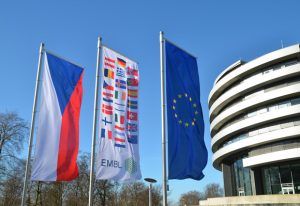
Connections, Events Forty years after its foundation, EMBL announces its 21st member state: the Czech Republic. Building on a successful bilateral relationship, the Czech Republic’s membership grants Czech scientists access to EMBL’s state-of-the-art instruments, facilities and world-class training…
2014
connectionsevents

Connections, Events At a signing ceremony today, Argentina joins the European Molecular Biology Laboratory (EMBL) as an associate member state. The move strengthens the ties between the European and Latin American life science communities. It grants Argentinian scientists access to EMBL’s world-class facilities and…
2014
connectionsevents
Connections, Lab Matters A pioneering public-private research initiative between GSK, the European Bioinformatics Institute (EMBL-EBI) and the Wellcome Trust Sanger Institute is to harness the power of ‘big data’ and genome sequencing to improve the success rate for discovering new medicines. The new Centre for…
2014
connectionslab-matters

Connections, Events The European Molecular Biology Laboratory (EMBL) welcomes the Slovak Republic as the first country to join its new Prospect Member scheme. In a Statement of Intent signed last month, the Slovak Republic and EMBL agree to explore the possibilities for long-term cooperation, with a view to the…
2014
connectionsevents

Connections, Lab Matters Europe is uniting to make state-of-the-art imaging technologies accessible to biomedical researchers throughout the continent in a concerted manner. The European Molecular Biology Laboratory (EMBL) and seven countries (Belgium, Finland, Italy, Poland, Slovakia, the Netherlands, the United Kingdom)…
2014
connectionslab-matters
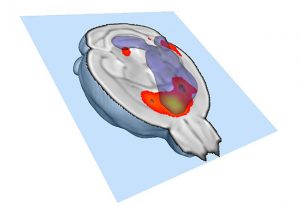
Science, Science & Technology In many people with autism and other neurodevelopmental disorders, different parts of the brain don’t talk to each other very well. Scientists have now identified, for the first time, a way in which this decreased functional connectivity can come about. In a study published online today…
2014
sciencescience-technology
Science, Science & Technology What do bullies and sex have in common? Based on work by scientists at the European Molecular Biology Laboratory (EMBL) in Monterotondo, Italy, it seems that the same part of the brain reacts to both. In a study published today in Nature Neuroscience, the researchers found that – at least in…
2013
sciencescience-technology
Science, Science & Technology The molecular machine that makes essential components of ribosomes – the cell’s protein factories – is like a Swiss-army knife, researchers at the European Molecular Biology Laboratory (EMBL) in Heidelberg, Germany, and the Centro de Investigaciones Biológicas in Madrid, Spain, have found.…
2013
sciencescience-technology
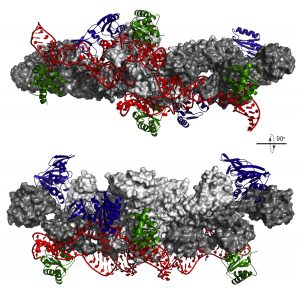
Science, Science & Technology An important step in building ribosomes – the cell’s protein factories – is like a strictly choreographed dance, scientists at the European Molecular Biology Laboratory (EMBL) in Heidelberg, Germany, have discovered. To build these factories, other ‘machines’ inside the cell have to…
2013
sciencescience-technology
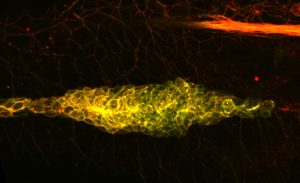
Science, Science & Technology Migrating cells, it seems, cover their tracks not for fear of being followed, but to keep moving forward. Scientists at the European Molecular Biology Laboratory (EMBL) in Heidelberg, Germany, have now shown that cells in a zebrafish embryo determine which direction they move in by effectively…
2013
sciencescience-technology
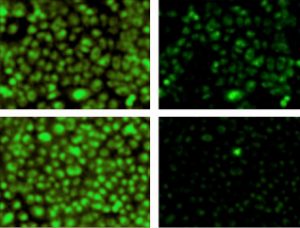
Science, Science & Technology Scientists at the European Molecular Biology Laboratory (EMBL) in Heidelberg and Regensburg University, both in Germany, and the University of Lisboa, in Portugal, have discovered a promising potential drug target for cystic fibrosis. Their work, published online today in Cell, also uncovers a…
2013
sciencescience-technology
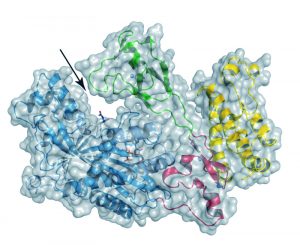
Science, Science & Technology Like a fireman who becomes an arsonist, a protein that prevents cells becoming cancerous can also cause tumours, scientists at the European Molecular Biology Laboratory (EMBL) in Grenoble, France, have discovered. The finding, published today in Nature Structural and Molecular Biology, stems…
2013
sciencescience-technology
Science, Science & Technology How our body processes cholesterol has a well-known impact on our health, but it turns out that another ‘fat molecule’ – or lipid – may be at the heart of some diseases which were thought to involve cholesterol. A group of proteins linked to conditions such as metabolic syndrome and some…
2013
sciencescience-technology
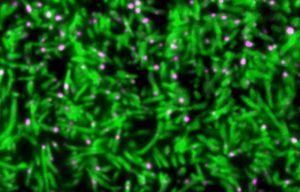
Science, Science & Technology The process cells use to ‘swallow’ up nutrients, hormones and other signals from their environment – called endocytosis – can play a crucial role in shaping the cells themselves, scientists at the European Molecular Biology Laboratory (EMBL) in Heidelberg, Germany, have found. The study,…
2013
sciencescience-technology
Science, Science & Technology It’s a parent’s nightmare: opening a Lego set and being faced with 500 pieces, but no instructions on how to assemble them into the majestic castle shown on the box. Thanks to a new approach by scientists at the European Molecular Biology Laboratory (EMBL) in Heidelberg, Germany,…
2013
sciencescience-technology
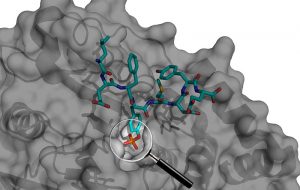
Science, Science & Technology Although we know the tool’s general purpose, it can sometimes be difficult to tell if a specific pair of precision tweezers belongs to a surgeon or a master jeweller. It is now easier to solve similar conundrums about a type of protein that allows cells to react to their environment, thanks to…
2013
sciencescience-technology
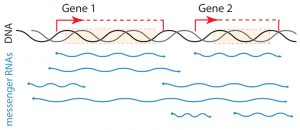
Science, Science & Technology Like musicians in an orchestra who have the same musical score but start and finish playing at different intervals, cells with the same genes start and finish transcribing them at different points in the genome. For the first time, researchers at EMBL have described the striking diversity of…
2013
sciencescience-technology
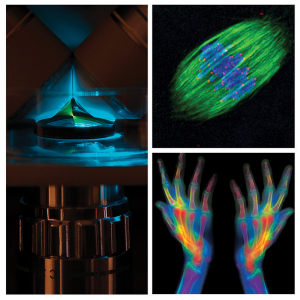
Connections, Lab Matters Euro-BioImaging, the pan-European open access research infrastructure for biological and medical imaging technologies, invites leading European imaging facilities to submit proposals to participate. Applications to become a Euro-BioImaging node will be reviewed by a board of independent…
2013
connectionslab-matters
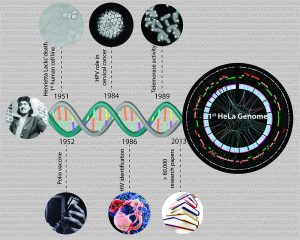
Science, Science & Technology HeLa cells are the world’s most commonly used human cell lines, and have served as a standard for understanding many fundamental biological processes. In a study published today in G3: Genes, Genomes and Genetics online, scientists at the European Molecular Biology Laboratory in…
2013
sciencescience-technology

Connections, Lab Matters Today, the Nordic EMBL Partnership for Molecular Medicine celebrates two important milestones: the renewal of the partnership agreement for an extended period of 10 years, and the expansion of the Nordic EMBL network with the official opening of the Danish Research Institute of Translational…
2013
connectionslab-matters
Science, Science & Technology During embryo development, genes are dynamically, and very precisely, switched on and off to confer different properties to different cells and build a well-proportioned and healthy animal. Fgf8 is one of the key genes in this process, controlling in particular the growth of the limbs and…
2013
sciencescience-technology
Science, Science & Technology Studies screening the genome of hundreds of thousands of individuals (known as Genome-wide association studies or GWAS) have linked more than 100 regions in the genome to the risk of developing cardiovascular disease. Researchers from the European Molecular Biology Laboratory (EMBL) and the…
2013
sciencescience-technology
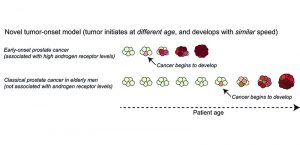
Science, Science & Technology While prostate cancer is the most common cancer in elderly Western men it also, but more rarely, strikes patients aged between 35 and 50. Scientists at the European Molecular Biology Laboratory (EMBL) in Heidelberg, Germany, in collaboration with several other research teams in Germany*, have…
2013
sciencescience-technology
Science, Science & Technology Mature cells can be reprogrammed to pluripotency and thus regain the ability to divide and differentiate into specialized cell types. Although these so-called induced pluripotent stem cells (iPS cells) represent a milestone in stem cell research, many of the biochemical processes that underlie…
2013
sciencescience-technology
Science, Science & Technology Scientists at the EMBL-European Bioinformatics Institute (EMBL-EBI) and the MRC Laboratory of Molecular Biology in the UK have discovered how our genome keeps the effects of mutations in check. The discovery, published in the journal Cell, will help in the study of diseases such as cancer and…
2013
sciencescience-technology
Science, Science & Technology Researchers at the EMBL-European Bioinformatics Institute (EMBL-EBI) have created a way to store data in the form of DNA – a material that lasts for tens of thousands of years. The new method, published today in the journal Nature, makes it possible to store at least 100 million hours of…
2013
sciencescience-technology
Science, Science & Technology This may look like yet another video of a dividing cell, but there’s a catch. You are looking at chromosomes (red) being pulled apart by the mitotic spindle (green), but it’s not a cell, because there’s no cell membrane. Like a child sucking an egg out of its shell, Ivo Telley from the…
2013
sciencescience-technology
Science, Science & Technology A research team of scientists from EMBL Grenoble and the IGBMC in Strasbourg, France, have, for the first time, described in molecular detail the architecture of the central scaffold of TFIID: the human protein complex essential for transcription from DNA to mRNA. The study, published today…
2013
sciencescience-technology
Science, Science & Technology Gene expression wave in the lower part of the future vertebrae column of a mammalian embryo. As the wave goes forward, new pre-vertebrae are formed and the future vertebrae column elongates. (Image and video credit: Nature) In a nutshell: The size of pre-vertebrae in a mammalian embryo is…
2012
sciencescience-technology
Science, Science & Technology In a nutshell : The gut metagenome is the collection of all the genomes of all the microbes in the human intestinal tract : it is specific to each human, like a second genetic signature At least in healthy humans, this personal metagenome is stable over time The gut metagenome is…
2012
sciencescience-technology
Science, Science & Technology In a nutshell: 1st map combining human genetic variation at different scales – from single letters to large chunks Based on genomes of 1092 healthy people from Europe, the Americas and East Asia Could help identify genetic causes of disease, rather than just links Data made freely available in…
2012
sciencescience-technology
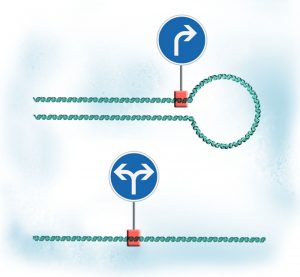
Science, Science & Technology In a nutshell: Looping and unlooping DNA adjusts readout from gene and spread of regulation throughout the genome When a gene forms a loop, its output increases, as the transcription machinery that reads it is trapped into moving only along that gene When the gene loop is undone, transcription…
2012
sciencescience-technology
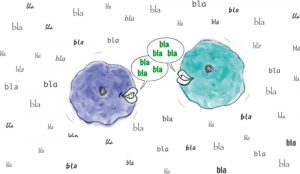
Science, Science & Technology In a nutshell: New method allows precise analysis of proteins released by cells over time (distinguishes them from proteins in the cells’ culture serum) Advantages: cells don’t have to be starved: avoids bias and allows more cell types to be studied; can follow fast reactions like immune…
2012
sciencescience-technology
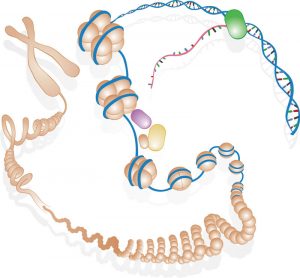
Science, Science & Technology Today, an international team of researchers reveal that much of what has been called ‘junk DNA’ in the human genome is actually a massive control panel with millions of switches regulating the activity of our genes. Without these switches, genes would not work – and mutations in these regions…
2012
sciencescience-technology
Science, Technology and innovation Scientists at the European Molecular Biology Laboratory (EMBL) in Heidelberg, Germany, have combined the power of two kinds of microscope to produce a 3-dimensional movie of how cells ‘swallow’ nutrients and other molecules by engulfing them. The study, published today in Cell, is the…
2012
sciencetechnology-and-innovation
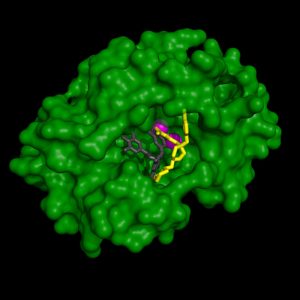
Science, Science & Technology Researchers at the European Molecular Biology Laboratory (EMBL) in Grenoble, France, have determined the detailed 3-dimensional structure of part of the flu virus’ RNA polymerase, an enzyme that is crucial for influenza virus replication. This important finding is published today in PLoS…
2012
sciencescience-technology

Science, Science & Technology What do you get when you dissect 10 000 fruit-fly larvae? A team of researchers led by the EMBL- European Bioinformatics Institute (EMBL-EBI) in the UK and the Max Planck Institute of Immunobiology and Epigenetics (MPI) in Germany has discovered a way in which cells can adjust the activity of many…
2012
sciencescience-technology
Connections, Science Italy has pledged to participate in ELIXIR, a major undertaking to safeguard the results of life science research in Europe. With one of Europe’s larger economies now demonstrating its commitment to ELIXIR, this burgeoning research infrastructure is well placed to continue its excellent progress.…
2012
connectionsscience
Science, Science & Technology A traffic policeman standing at a busy intersection directing the flow of vehicles may be a rare sight these days, but a similar scene appears to still frequently play out in our cells. A protein called Lem4 directs a crucial step of cell division by preventing the progress of one molecule while…
2012
sciencescience-technology
Science, Science & Technology Savira pharmaceuticals GmbH, a spin-off of the European Molecular Biology Laboratory (EMBL) based in Vienna, Austria, has signed a collaboration and license agreement with Roche, thus further strengthening the links between fundamental research and major pharmaceutical development companies. This…
2012
sciencescience-technology
Science, Science & Technology As a retrovirus matures, the two parts of its shell protein (red and blue or yellow and blue) dramatically rearrange themselves, twisting and moving away from each other. (Credit: EMBL/T.Bharat) Scientists at the European Molecular Biology Laboratory (EMBL) in Heidelberg, Germany, have for the…
2012
sciencescience-technology
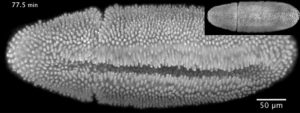
Science, Science & Technology “This video shows a fruit fly embryo from when it was about two-and-a-half hours old until it walked away from the microscope as a larva, 20 hours later,” says Lars Hufnagel, from the European Molecular Biology Laboratory (EMBL) in Heidelberg, Germany. “It shows all the hallmarks of fruit fly…
2012
sciencescience-technology
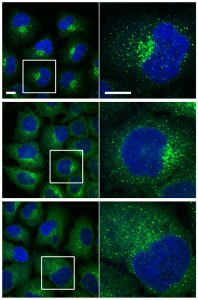
Science, Science & Technology Scientists at the European Molecular Biology Laboratory (EMBL) in Heidelberg, Germany, have conducted the first comprehensive census of human cells’ export workers. In a study published online today in Nature Cell Biology, they found an unexpected variety of genes involved in transporting…
2012
sciencescience-technology
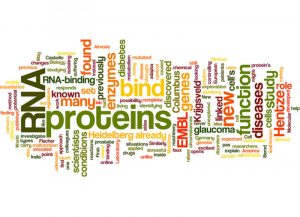
Science, Science & Technology In one of the most famous faux pas of exploration, Columbus set sail for India and instead ‘discovered’ America. Similarly, when scientists at the European Molecular Biology Laboratory (EMBL) in Heidelberg, Germany, set out to find enzymes – the proteins that carry out chemical…
2012
sciencescience-technology

Picture of the week, Science & Technology These spheres may look almost identical, but subtle differences between them revealed a molecular version of the robots from Transformers. Each sphere is a vesicle, a pod that cells use to transport materials between different compartments. The images, produced by Marco Faini from John…
2012
picture-of-the-weekscience-technology
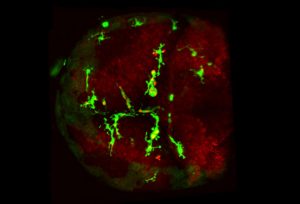
Science, Science & Technology Like emergency workers rushing to a disaster scene, cells called microglia speed to places where the brain has been injured, to contain the damage by ‘eating up’ any cellular debris and dead or dying neurons. Scientists at the European Molecular Biology Laboratory (EMBL) in Heidelberg, Germany,…
2012
sciencescience-technology
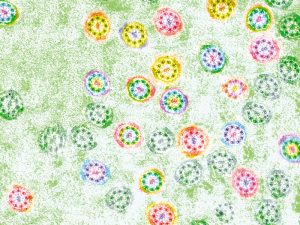
Picture of the week, Science & Technology As spring arrives, flowers seem to bloom everywhere – even under the microscopes at the European Molecular Biology Laboratory (EMBL) in Heidelberg, Germany. But the ‘flowers’ in this picture actually help an animal, not a plant, to pass on its genes. The image, which has been false-coloured…
2012
picture-of-the-weekscience-technology
Science, Science & Technology Like any law-abiding train passenger, a molecule called oskar RNA carries a stamped ticket detailing its destination and form of transport, scientists at the European Molecular Biology Laboratory (EMBL) in Heidelberg, Germany, have found. They show that for this molecule, moving in the…
2012
sciencescience-technology
Science, Science & Technology Today a consortium of leading IT providers and three of Europe’s biggest research centres (CERN, EMBL and ESA) announced a partnership to launch a European cloud computing platform. ‘Helix Nebula ‐ the Science Cloud’, will support the massive IT requirements of European…
2012
sciencescience-technology
Science, Science & Technology The bacterium Mycoplasma pneumoniae, which causes atypical pneumonia, is helping scientists uncover how cells make the most of limited resources. By measuring all the proteins this bacterium produces, scientists at the European Molecular Biology Laboratory (EMBL) in Heidelberg, Germany, and…
2012
sciencescience-technology
Science, Science & Technology Breakthroughs in biomedical science are a step closer today, with the launch of a new distributed research infrastructure for the science of structural biology: Instruct. The launch of Instruct will give academic and commercial scientists across Europe access to a full portfolio of integrated…
2012
sciencescience-technology
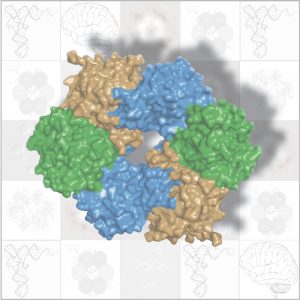
Science, Science & Technology In fairy tales, magic rings endow their owners with special abilities: the ring makes the wearer invisible, fulfils his wishes, or otherwise helps the hero on the path to his destiny. Similarly, a ring-like structure found in a protein complex called ‘Elongator’ has led researchers at the…
2012
sciencescience-technology
Science, Science & Technology Myomesin stretching to 2.5 times its length. Credit: EMBL/Wilmanns. In this video, a protein called myomesin does its impression of Mr. Fantastic, the leader of the Fantastic Four of comic book fame, who performed incredible feats by stretching his body. Scientists at the European Molecular Biology…
2012
sciencescience-technology
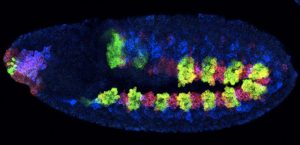
Science, Science & Technology If you wanted to draw your family tree, you could start by searching for people who share your surname. Cells, of course, don’t have surnames, but scientists at the European Molecular Biology Laboratory (EMBL) in Heidelberg, Germany, have found that genetic switches called enhancers, and the…
2012
sciencescience-technology
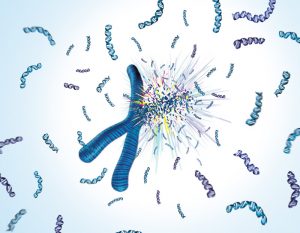
Science, Science & Technology An inherited mutation in a gene known as the guardian of the genome is likely the link between exploding chromosomes and some particularly aggressive types of cancer, scientists at the European Molecular Biology Laboratory (EMBL), the German Cancer Research Centre (DKFZ) and the University…
2012
sciencescience-technology
Science, Science & Technology A team of geneticists and computational biologists at the European Molecular Biology Laboratory’s European Bioinformatics Institute (EMBL-EBI), the Wellcome Trust Sanger Institute and Cancer Research UK reveal how an ancient mechanism is involved in gene control and continues to drive genome…
2012
sciencescience-technology
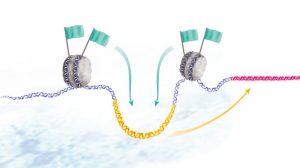
Science, Science & Technology As an embryo develops, different genes are turned on in different cells, to form muscles, neurons and other bodily parts. Inside each cell’s nucleus, genetic sequences known as enhancers act like remote controls, switching genes on and off. Scientists at the European Molecular Biology Laboratory…
2012
sciencescience-technology
Lab Matters The European Molecular Biology Laboratory’s European Bioinformatics Institute (EMBL-EBI) and the Biotechnology and Biological Sciences Research Council (BBSRC) warmly welcome today’s announcement from the UK Government of a £75 million commitment from the Department for Business, Innovation…
2011
lab-matters
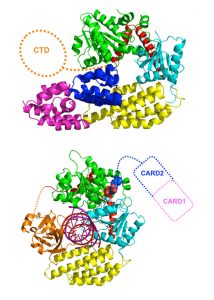
Science When a thief breaks into a bank vault, sensors are activated and the alarm is raised. Cells have their own early-warning system for intruders, and scientists at the European Molecular Biology Laboratory (EMBL) in Grenoble, France, have discovered how a particular protein sounds that alarm when it…
2011
science
Lab Matters Today marks an important step for ELIXIR, Europe’s emerging research infrastructure for life-science information, as five countries plus the European Molecular Biology Laboratory (EMBL) have signed a Memorandum of Understanding to catalyse the implementation and construction of ELIXIR. The…
2011
lab-matters
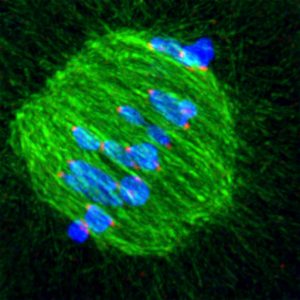
Science When an egg cell is being formed, the cellular machinery which separates chromosomes is extremely imprecise at fishing them out of the cell’s interior, scientists at the European Molecular Biology Laboratory (EMBL) in Heidelberg, Germany, have discovered. The unexpected degree of trial-and-error…
2011
science
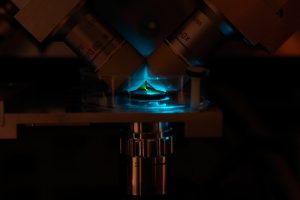
Science Researchers can now watch molecules move in living cells, literally millisecond by millisecond, thanks to a new microscope developed by scientists at the European Molecular Biology Laboratory (EMBL) in Heidelberg, Germany. Published online today in Nature Biotechnology, the new technique provides…
2011
science
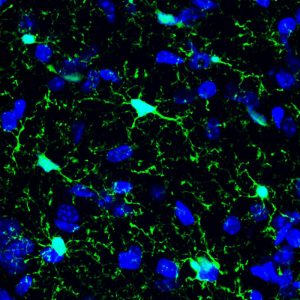
Science Gardeners know that some trees require regular pruning: some of their branches have to be cut so that others can grow stronger. The same is true of the developing brain: cells called microglia prune the connections between neurons, shaping how the brain is wired, scientists at the European…
2011
science
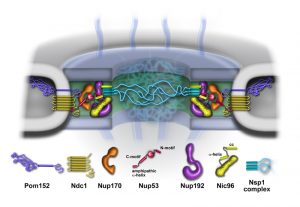
Science A fungus that lives at extremely high temperatures could help understand structures within our own cells. Scientists at the European Molecular Biology Laboratory (EMBL) and Heidelberg University, both in Heidelberg, Germany, were the first to sequence and analyse the genome of a heat-loving fungus,…
2011
science

Lab Matters Lennart Philipson, who served as EMBL’s second Director General, has passed away. Lennart headed EMBL for over a decade between 1982-93, a crucial time for molecular biology when different scientific disciplines in the life sciences were becoming increasingly interlinked. He reorganised the…
2011
lab-matters
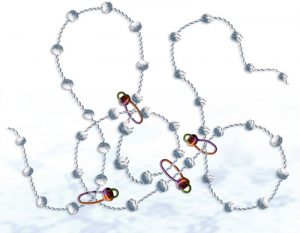
Science As any rock-climber knows, trailing a long length of rope behind you is not easy. A dangling length of rope is unwieldy and hard to manoeuvre, and can get tangled up or stuck on an outcropping. Cells face the same problem when dragging chromosomes apart during cell division. The chromosomes are…
2011
science
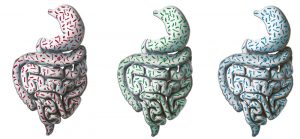
Science In the future, when you walk into a doctor’s surgery or hospital, you could be asked not just about your allergies and blood group, but also about your gut type. Scientists at the European Molecular Biology Laboratory (EMBL) in Heidelberg, Germany, and collaborators in the international MetaHIT…
2011
science
Science Scientists at the European Molecular Biology Laboratory (EMBL) in Heidelberg, Germany, have developed a new method for studying gene regulation, by employing a jumping gene as an informant. Published online today in Nature Genetics, the new method is called GROMIT. It enables researchers to…
2011
science
Science Scientists at the European Molecular Biology Laboratory (EMBL) in Heidelberg, Germany, have developed a new method which enables researchers to label any protein of their choice with any of a wide variety of previously available compounds, in living cells, by introducing a single reactive…
2011
science
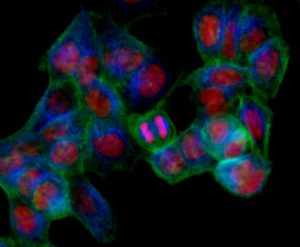
Science Scientists at the European Molecular Biology Laboratory (EMBL) and the German Cancer Research Centre (DKFZ), both in Heidelberg, Germany, have developed a new method that uncovers the combined effects of genes. Published online today in Nature Methods, it helps understand how different genes can…
2011
science
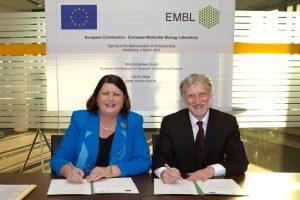
Lab Matters In a Memorandum of Understanding signed today, the European Commission (EC) and the European Molecular Biology Laboratory (EMBL) formalise their desire to maintain and further develop their cooperation. “I am delighted to sign the renewed and strengthened Memorandum of Understanding between the…
2011
lab-matters
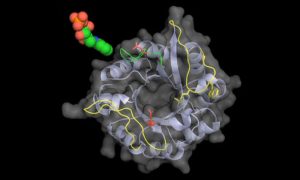
Science In a paper published online today in PNAS, scientists from the European Molecular Biology Laboratory (EMBL) in Hamburg, Germany, reveal new insights into the workings of enzymes from a group of bacteria including Mycobacterium tuberculosis, the bacterium that causes tuberculosis. The new findings…
2011
science
Lab Matters The Biotechnology and Biological Sciences Research Council (BBSRC) and the European Molecular Biology Laboratory’s European Bioinformatics Institute (EMBL-EBI) welcome news that funding has been earmarked from the UK’s Large Facilities Capital Fund for ELIXIR – the European Life-science…
2011
lab-matters
Science In our not-so-distant evolutionary past, stress often meant imminent danger, and the risk of blood loss, so part of our body’s stress response is to stock-pile blood-clotting factors. Scientists in the Molecular Medicine Partnership Unit (MMPU), a collaboration between the European Molecular…
2011
science
Science A detailed analysis of data from 185 human genomes sequenced in the course of the 1000 Genomes Project, by scientists at the European Molecular Biology Laboratory (EMBL) in Heidelberg, Germany, in collaboration with researchers at the Wellcome Trust Sanger Institute in Cambridge, UK, as well as the…
2011
science
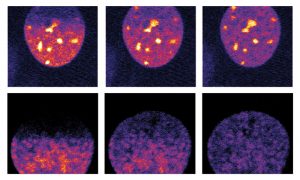
Science The sight of a researcher sitting at a microscope for hours, painstakingly searching for the right cells, may soon be a thing of the past, thanks to new software created by scientists at the European Molecular Biology Laboratory (EMBL) in Heidelberg, Germany. Presented today in Nature Methods, the…
2011
science
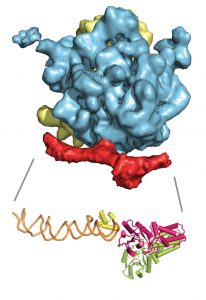
Science Like an overprotective parent on the first day of school, a targeting factor sometimes needs a little push to let go of its cargo. Scientists at the European Molecular Biology Laboratory (EMBL) in Grenoble, France, have visualised one such hand-over. They were the first to determine the structure…
2010
science
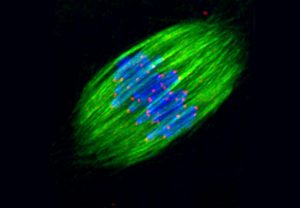
Science From microscopy to computer tomography (CT) scans, imaging plays an important role in biological and biomedical research, but obtaining high-quality images often requires advanced technology and expertise, and can be costly. Euro-BioImaging, a project which launches its preparatory phase today,…
2010
science
Science The cells in the different parts of this video are always the same (grey), but, like actors using make-up to highlight different facial features, they have fluorescent labels that mark different cellular components in different colours: blue shows the nucleus, yellow shows tubulin (a component of…
2010
science

Lab Matters At the Autumn 2010Council meeting of the EIROforum, a partnership of seven European intergovernmental research organisations with large research infrastructures, the Directors General unanimously accepted the European X-Ray Free-Electron Laser Facility (European XFEL), based in Hamburg, Germany, to…
2010
lab-matters
Science The 1000 Genomes Project, a major international collaboration to build a detailed map of human genetic variation, has completed its pilot phase. The results are now published in the journal Nature and freely available through the European Molecular Biology Laboratory’s European Bioinformatics…
2010
science
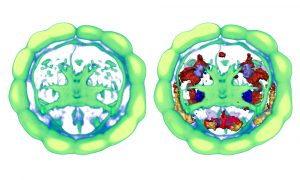
Science Our cerebral cortex, or pallium, is a big part of what makes us human: art, literature and science would not exist had this most fascinating part of our brain not emerged in some less intelligent ancestor in prehistoric times. But when did this occur and what were these ancestors? Unexpectedly,…
2010
science
Science Fear can make you run, it can make you fight, and it can glue you to the spot. Scientists at the European Molecular Biology Laboratory (EMBL) in Monterotondo, Italy and GlaxoSmithKline in Verona, Italy, have identified not only the part of the brain but the specific type of neurons that determine…
2010
science
Science During cell division, microtubules emanating from each of the spindle poles meet and overlap in the spindle’s midzone. Scientists at the European Molecular Biology Laboratory (EMBL) in Heidelberg, Germany, have uncovered the molecular mechanism that determines the extent of this overlap. In a…
2010
science
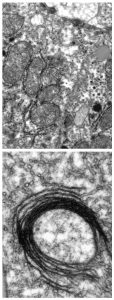
Science Most organisms need iron to survive, but too much iron is toxic, and can cause fatal organ failure. The same is true inside cells, where iron balance must also be maintained. In a study published today in Cell Metabolism, scientists at the European Molecular Biology Laboratory (EMBL) in Heidelberg,…
2010
science
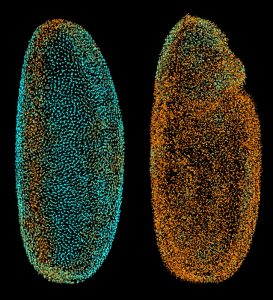
Science The scientists at the European Molecular Biology Laboratory (EMBL) in Heidelberg, Germany, who ‘fathered’ the Digital Embryo have now given it wings, creating the Fly Digital Embryo. In work published today in Nature Methods, they were able to capture fruit fly development on film, and were the…
2010
science
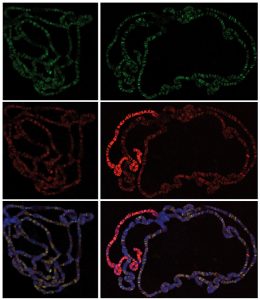
Science Researchers from the European Molecular Biology Laboratory (EMBL) in Heidelberg, Germany, and the Max-Planck Institute of Immunobiology Freiburg have identified a novel protein complex that regulates around 4000 genes in the fruit fly Drosophila and likely plays an important role in mammals, too.…
2010
science
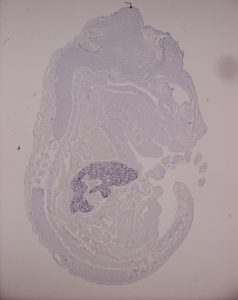
Science Red blood cells, the delivery men that take oxygen to cells all around the body, have short lives. To keep enough of them in circulation, the human body produces around 2 million of these cells every second – even more in response to challenges like severe blood loss. In a study published today…
2010
science
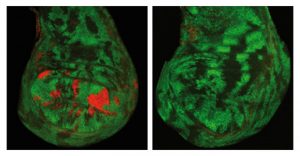
Science During embryonic development, proteins called Polycomb group complexes turn genes off when and where their activity must not be present, preventing specialised tissues and organs from forming in the wrong places. They also play an important role in processes like stem cell differentiation and…
2010
science
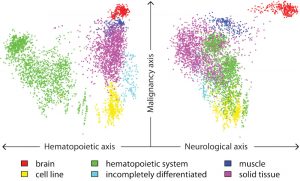
Science Just like members of an orchestra are active at different times although playing the same piece of music, every cell in our body contains the same genetic sequence but expresses this differently to give rise to cells and tissues with specialised properties. By integrating gene expression data from…
2010
science
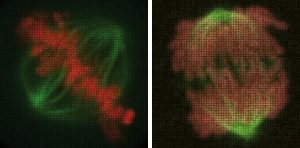
Science Name a human gene, and you’ll find a movie online showing you what happens to cells when it is switched off. This is the resource that researchers at the European Molecular Biology Laboratory (EMBL) in Heidelberg, Germany, and their collaborators in the Mitocheck consortium are making freely…
2010
science
Science Once the human genome was sequenced in 2001, the hunt was on for the genes that make each of us unique. But scientists at the European Molecular Biology Laboratory (EMBL) in Heidelberg, Germany, and Yale and Stanford Universities in the USA, have found that we differ from each other mainly because…
2010
science
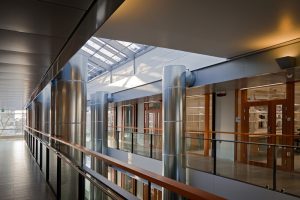
Lab Matters Today, the Nordic EMBL Partnership for Molecular Medicine officially inaugurates the Institute for Molecular Medicine Finland (FIMM) in Helsinki. Together with the Centre for Molecular Medicine Norway (NCMM, University of Oslo) and the Laboratory for Molecular Infection Medicine Sweden (MIMS, Umeå…
2010
lab-matters
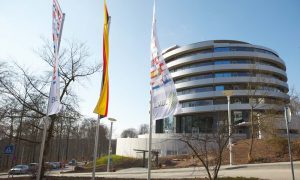
Lab Matters Today, the German Minister for Education and Research, Annette Schavan, officially opens the new training and conference centre for the life sciences on the campus of the European Molecular Biology Laboratory (EMBL) in Heidelberg. “This new centre in Heidelberg will form a central European…
2010
lab-matters
Science The thousands of bacteria, fungi and other microbes that live in our gut are essential contributors to our good health. They break down toxins, manufacture some vitamins and essential amino acids, and form a barrier against invaders. A study published today in Nature shows that, at 3.3 million,…
2010
science
Science The last ancestor we shared with worms, which roamed the seas around 600 million years ago, may already have had a sophisticated brain that released hormones into the blood and was connected to various sensory organs. The evidence comes not from a newly found fossil but from the study of microRNAs…
2010
science
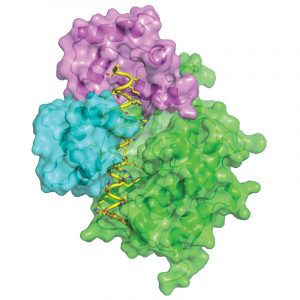
Science Cells rely on a range of signalling systems to communicate with each other and to control their own internal workings. Scientists from the European Molecular Biology Laboratory (EMBL) in Hamburg, Germany, have now found a way to hack into a vital communications system, raising the possibility of…
2010
science
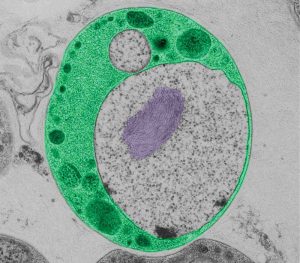
Science Although they are present almost everywhere, on land and sea, a group of related bacteria in the superphylum Planctomycetes-Verrucomicrobia-Chlamydiae, or PVC, have remained in relative obscurity ever since they were first described about a decade ago. Scientists at the European Molecular Biology…
2010
science
Science ChEMBLdb, a vast online database of information on the properties and activities of drugs and drug-like small molecules and their targets, launches today with information on over half a million compounds. The data lie at the heart of translating information from the human genome into successful new…
2010
science
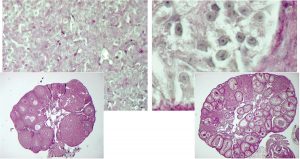
Science Is it a boy or a girl? Expecting parents may be accustomed to this question, but contrary to what they may think, the answer doesn’t depend solely on their child’s sex chromosomes. Scientists at the European Molecular Biology Laboratory (EMBL) in Heidelberg, Germany and the Medical Research…
2009
science
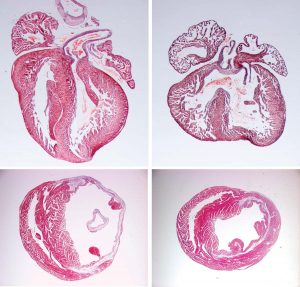
Science Almost a century after it was discovered in fruit flies with notches in their wings, the Notch signalling pathway may come to play an important role in the recovery from heart attacks. In a study published today in Circulation Research, scientists at the European Molecular Biology Laboratory (EMBL)…
2009
science
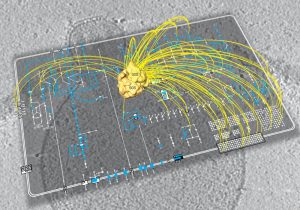
Science What are the bare essentials of life, the indispensable ingredients required to produce a cell that can survive on its own? Can we describe the molecular anatomy of a cell, and understand how an entire organism functions as a system? These are just some of the questions that scientists in a…
2009
science
Science Much as adrenaline coursing through our veins drives our body’s reactions to stress, the plant hormone abscisic acid (ABA) is behind plants’ responses to stressful situations such as drought, but how it does so has been a mystery for years. Scientists at the European Molecular Biology…
2009
science
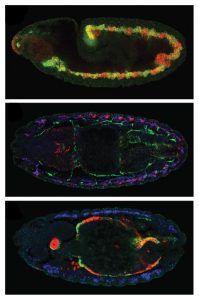
Science Embryonic development is like a well-organised building project, with the embryo’s DNA serving as the blueprint from which all construction details are derived. Cells carry out different functions according to a developmental plan, by expressing, i.e. turning on, different combinations of genes.…
2009
science
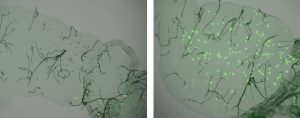
Science For many years, the mosquitoes that transmit malaria to humans were seen as public enemies, and campaigns to eradicate the disease focused on eliminating the mosquitoes. But, as a study published today in Science shows, the mosquitoes can also be our allies in the fight against this common foe,…
2009
science
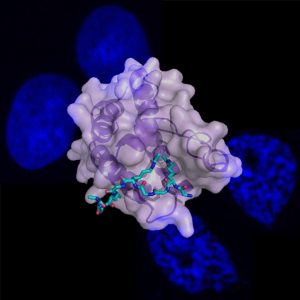
Science In the quest for speed, olympic swimmers shave themselves or squeeze into high-tech super-suits. In the body, sperm are the only cells that swim and, as speed is crucial to fertility, have developed their own ways to become exceptionally streamlined. Scientists at the European Molecular Biology…
2009
science
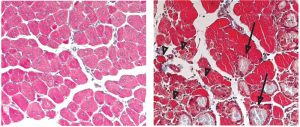
Science For scientists at the European Molecular Biology Laboratory (EMBL) in Monterotondo, Italy, what seemed like a disappointing result turned out to be an important discovery. Their findings, published online this week in the journal Proceedings of the National Academy of Sciences (PNAS), provide…
2009
science
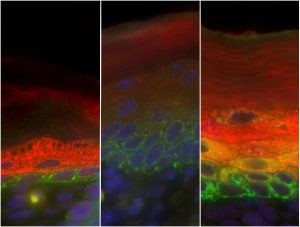
Science Stem cells have a unique ability: when they divide, they can either give rise to more stem cells, or to a variety of specialised cell types. In both mice and humans, a layer of cells at the base of the skin contains stem cells that can develop into the specialised cells in the layers above.…
2009
science
Lab Matters BBSRC has awarded funding to the European Molecular Biology Laboratory’s European Bioinformatics Institute (EMBL-EBI), based at Hinxton near Cambridge, to permit a dramatic increase in the institute’s data storage and handling capacity. The funding is the first step in developing the existing…
2009
lab-matters
Science Our genome is constantly under attack from things like UV light and toxins, which can damage or even break DNA strands and ultimately lead to cancer and other diseases. Scientists have known for a long time that when DNA is damaged, a key enzyme sets off a cellular ‘alarm bell’ to alert the…
2009
science
Science Chronic inflammatory lung diseases like chronic bronchitis and emphysema are a major global health problem, and the fourth leading cause of death and disability in developed countries, with smoking accounting for 90% of the risk for developing them. Work by scientists at the European Molecular…
2009
science
Science Scientists at the European Molecular Biology Laboratory (EMBL) and the University of Heidelberg, Germany, have come a step closer to understanding how cholesterol levels are regulated. In a study published today in the journal Cell Metabolism, the researchers identified 20 genes that are involved…
2009
science
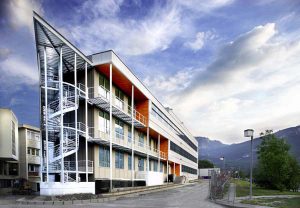
Lab Matters On June 26 2009 the joint international Unit for Virus and Host Cell Interactions (Unité Mixte Internationale) was formally established in Grenoble. The unit is run jointly by CNRS, the Grenoble outstation of the European Molecular Biology Laboratory (EMBL) and the Grenoble University Joseph…
2009
lab-matters
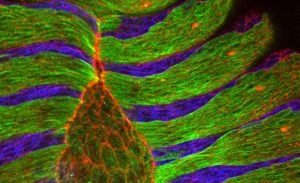
Science Researchers at the European Molecular Biology Laboratory (EMBL) in Heidelberg, Germany, came a step closer to understanding how cells close gaps not only during embryonic development but also during wound healing. Their study, published this week in the journal Cell, uncovers a fundamental…
2009
science
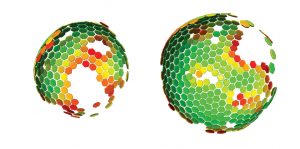
Science Scientists at the European Molecular Biology Laboratory (EMBL) and the University Clinic Heidelberg, Germany, have produced a three-dimensional reconstruction of HIV (Human Immunodeficiency Virus), which shows the structure of the immature form of the virus at unprecedented detail. Immature HIV is…
2009
science

Lab Matters Mice are one of biology’s most important model organisms, because 98% of their genes and many of their traits and diseases are similar to ours. Researchers at the Mouse Biology Unit of the European Molecular Biology Laboratory (EMBL) take advantage of these similarities and use mice to study…
2009
lab-matters
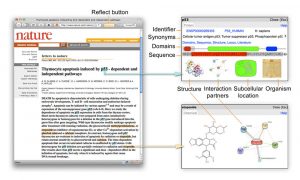
Science The life sciences are scaling up and produce huge amounts of data and new literature at an amazing pace. The European Molecular Biology Laboratory (EMBL) now offers a new free service to help researchers, teachers and students keep up-to-date with scientific literature on the web, especially when…
2009
science
Science Proteins are the executive agents that carry out all processes in a cell. Their activity is controlled and modified with the help of small chemical tags that can be dynamically added to and removed from the protein. 25 years after its first discovery, researchers at the European Molecular Biology…
2009
science
Science Most cellular processes are carried out by molecular machines that consist of many interacting proteins. These protein complexes lie at the heart of life science research, but they are notoriously hard to study. Their abundance is often too low to extract them directly from cells and generating…
2009
science
Science Recycling is important not only on a global scale, but also at the cellular level, since key molecules tend to be available in limited numbers. This means a cell needs to have efficient recycling mechanisms. Researchers at the European Molecular Biology Laboratory (EMBL) and Heidelberg University,…
2009
science
Science It can be found in all life forms, and serves a multitude of purposes, from energy storage to stress response to bone calcification. This molecular jack-of-all trades is polyphosphate, a long chain of phosphate molecules. Researchers at the European Molecular Biology Laboratory (EMBL) in…
2009
science

Science ‘Useless fish with big eyes’. This is what Medaka, the name of the Japanese killifish in the pictures, means in Japan where it originally comes from. While its eyes are undeniably big, the fish has proven remarkably useful for scientists. It is a simple model organism, amenable to…
2009
science
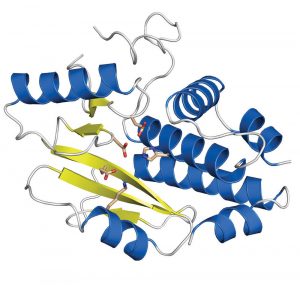
Science Influenza is and remains a disease to reckon with. Seasonal epidemics around the world kill several hundred thousand people every year. In the light of looming pandemics if bird flu strains develop the ability to infect humans easily, new drugs and vaccines are desperately sought. Researchers at…
2009
science
Science Genes that contain instructions for making proteins make up less than 2% of the human genome. Yet, for unknown reasons, most of our genome is transcribed into RNA. The same is true for many other organisms that are easier to study than humans. Researchers in the groups of Lars Steinmetz at the…
2009
science
Lab Matters Microscope designer Leica Microsystems and the European Molecular Biology Laboratory (EMBL) signed a corporate partnership agreement today whereby Leica Microsystems becomes a founder partner of the EMBL Advanced Training Centre scheduled to be completed in September 2009. Besides its financial…
2008
lab-matters
Science Cell division is one of the most fundamental processes of life. It explains how one cell can give rise to an organism of several million cells, it determines the shape of different life forms and it underpins our body’s capacity to heal when injured. Often we only notice how important cell…
2008
science
Lab Matters The European Molecular Biology Laboratory (EMBL) and PerkinElmer Life and Analytical Sciences, a global leader in life science research, drug discovery and cellular science, today announced that they have entered into a corporate partnership in support of EMBL’s Advanced Training Centre in…
2008
lab-matters
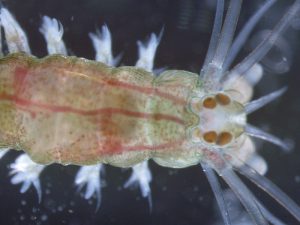
Science The best-selling novel The swarm captured the imagination of countless readers with the fascination of marine life. But it also showed how little we understand life in the depth of the ocean. Scientists at the European Molecular Biology Laboratory (EMBL) and the Max Planck Institute (MPI)…
2008
science
Science What at the first sight could be pictures of planets or other cosmic structures are actually microscope images of balls (cysts) of human kidney cells. They were taken by Emmanuel Reynaud, in the group of Ernst Stelzer at the European Molecular Biology Laboratory (EMBL), with a widefield microscope.…
2008
science
Lab Matters Today at a meeting organised by the European Molecular Biology Laboratory (EMBL) in Heidelberg, Germany, scientists from around the globe announced the formation of the International Human Microbiome Consortium (IHMC), an effort that will enable researchers to characterise the relationship of the…
2008
lab-matters
Science Researchers at the European Molecular Biology Laboratory (EMBL) have generated a digital zebrafish embryo – the first complete developmental blueprint of a vertebrate. With a newly developed microscope scientists could for the first time track all cells for the first 24 hours in the life of a…
2008
science
Lab Matters The Wellcome Trust has awarded £4.7 million (€5.8 million) to EMBL’s European Bioinformatics Institute (EMBL-EBI) to support the transfer of a large collection of information on the properties and activities of drugs and a large set of drug-like small molecules from the publicly listed…
2008
lab-matters
Science Mouse mothers-to-be have a remarkable way to protect their unborn pups. Because the smell of a strange male’s urine can cause miscarriage and reactivate the ovulatory cycle, pregnant mice prevent the action of such olfactory stimuli by blocking their smell. Researchers from the European…
2008
science
Science Researchers from the European Molecular Biology Laboratory (EMBL) discovered a new way to make use of drugs’ unwanted side effects. They developed a computational method that compares how similar the side effects of different drugs are and predicts how likely the drugs act on the same target…
2008
science
Science Genetic recombination, the process by which sexually reproducing organisms shuffle their genetic material when producing germ cells, leads to offspring with a new genetic make-up and influences the course of evolution. In the current issue of Nature, researchers at the European Molecular…
2008
science
Science Sudden Infant Death Syndrome (SIDS) is a condition that unexpectedly and unexplainably takes the lives of seemingly healthy babies aged between a month and a year. Now researchers of the European Molecular Biology Laboratory in Monterotondo, Italy, have developed a mouse model of the so-called crib…
2008
science
Science What makes a human different from a chimp? Researchers from the European Molecular Biology Laboratory’s European Bioinformatics Institute (EMBL-EBI) have come one important step closer to answering such evolutionary questions correctly. In the current issue of Science they uncover…
2008
science
Science Researchers from the European Molecular Biology Laboratory (EMBL) in Heidelberg, Germany, and the EMBL-European Bioinformatics Institute (EMBL-EBI) in Hinxton, UK, have revealed new insights into how sex chromosomes are regulated. A chromatin modifying enzyme helps compensate for the fact that…
2008
science
Lab Matters In a contract signed today, the European Commission has awarded €4.5 million to a pan-European consortium to decide upon the best way to unite Europe’s biological data resources into a sustainable, integrative bioinformatics network for the life sciences. The European Life-science…
2008
lab-matters
Science UK-based researchers at the Medical Research Council Functional Genomics Unit in Oxford and the European Molecular Biology Laboratory’s European Bioinformatics Institute in Cambridge have revealed the genetic makeup of the one of the world’s strangest mammals. They have analysed the DNA…
2008
science
Science Influenza is currently a grave concern for governments and health organisations around the world. Now one of the tactics used by influenza virus to take over the machinery of infected cells has been laid bare by structural biologists at the EMBL, the joint Unit of Virus Host-Cell Interaction of…
2008
science
Science Leukaemia – cancer of blood or bone marrow – is caused by mutations that allow defective blood cells to accumulate and displace healthy blood. To devise effective therapies it is crucial to know which mutations cause leukaemia and which cell type gives rise to leukaemic cells. Researchers from…
2008
science
Science Epigenetic regulation – modifications to the structure of chromatin that influence which genes are expressed in a cell – is a key player in embryonic development and cancer formation. Researchers at the European Molecular Biology Laboratory (EMBL) in Heidelberg now gained new insight…
2008
science
Science Much less widely known than the dangerous consequences of iron deficiencies is the fact that too much iron can also cause problems. The exact origin of the genetic iron overload disorder hereditary hemochromatosis [HH] has remained elusive. In a joint effort, researchers from the European Molecular…
2008
science
Lab Matters Drawing on the expertise of multi-disciplinary research teams, the map developed by the 1000 Genomes Project will provide a view of biomedically relevant DNA variations at a resolution unmatched by current resources. The European Bioinformatics Institute (EBI), working with long-term collaborator…
2008
lab-matters
Science Researchers from the European Molecular Biology Laboratory (EMBL) have discovered that proteins that regulate the body’s iron household play a vital role in making sure enough nutrients and water are absorbed in the intestine. Mice lacking these proteins suffer from weight loss and…
2008
science
Science It does not take much to injure a muscle. Sometimes one sudden, inconsiderate movement does the job. Unfortunately, damaged muscles are not as efficient at repair as other tissues such as bone. Researchers of the European Molecular Biology Laboratory’s Mouse Biology Unit (EMBL), Italy, and…
2007
science
Lab Matters ArrayExpress, the publicly available database of transcriptomics data at the European Molecular Biology Laboratory’s European Bioinformatics Institute (EMBL-EBI), has doubled in size in 2007, reaching the 100,000-hybridisation milestone. The database now holds snapshots of gene expression…
2007
lab-matters
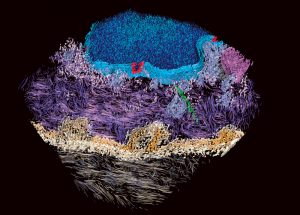
Science Seeing proteins in their natural environment and interactions inside cells has been a longstanding goal. Using an advanced microscopy technique called cryo-electron tomography, researchers from the European Molecular Biology Laboratory (EMBL) have visualised proteins responsible for cell-cell…
2007
science
Science Cells in our body come in various shapes and sizes. Each cell is shaped in such a way as to optimise it for a specific function. When things go wrong and a cell does not adopt its dedicated shape, its function can be impaired and the cell can cause problems in the body. Researchers at […]
2007
science

Lab Matters Today, the European Molecular Biology Laboratory (EMBL) announces Luxembourg as the new member of its international community. Accepted by EMBL’s council and ratified by the parliament of Luxembourg, the Grand-Duchy has officially joined the institute as the 20th member state. “EMBL is…
2007
lab-matters
Lab Matters The European Molecular Biology Laboratory’s European Bioinformatics Institute (EMBL-EBI) officially opens its new East Wing today with a reception for prominent guests. The East Wing will be jointly opened by Ian Pearson, Minister of State for Science and Innovation, UK, and Robert-Jan Smits,…
2007
lab-matters
Science New insights into the cellular signal chain through which pheromones stimulate mating in yeast have been gained by scientists at the European Molecular Biology Laboratory [EMBL]. Similar signal chains are found in humans, where they are involved in many important processes such as the…
2007
science
Lab Matters Today the European Molecular Biology Laboratory (EMBL), the University of Helsinki, Finland, the University of Oslo, Norway, and Umeå University, Sweden, officially launch their new Nordic EMBL Partnership for Molecular Medicine. The agreement will encourage scientific exchange and collaborations…
2007
lab-matters
Science Many neuronal disorders, including epilepsy, schizophrenia and lissencephaly ─ a form of mental retardation ─ result from abnormal migration of nerve cells during the development of the brain. Researchers from the Mouse Biology Unit of the European Molecular Biology Laboratory (EMBL) in Italy,…
2007
science
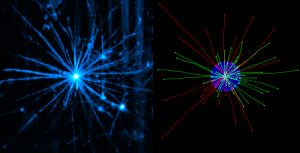
Science Scientists from the European Molecular Biology Laboratory (EMBL) have developed a new method to prepare and image biological samples in three dimensions with laser light-sheet based fluorescence microscopy. The technological advance, which is published in the current online issue of Nature…
2007
science
Lab Matters Three papers published by EMBL scientists and their collaborators will make it much easier to share and compare information from large-scale proteomics data. The papers are published in Nature Biotechnology on 8 and 26 August. As the quantity of available biological information and the use of…
2007
lab-matters
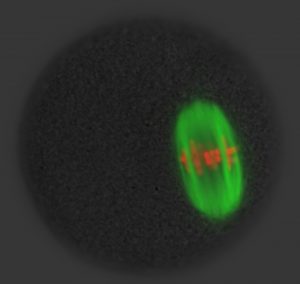
Science Which genes are passed on from mother to child is decided very early on during the maturation of the egg cell in the ovary. In a cell division process that is unique to egg cells, half of the chromosomes are eliminated from the egg before it is fertilised. Using a powerful microscope, researchers…
2007
science
Science The UniProt Consortium, which includes the European Molecular Biology Laboratory’s European Bioinformatics Institute (EMBL-EBI), has added a new database repository for metagenomic and environmental data to its family of protein sequence databases. Metagenomics is the large-scale genomic…
2007
science
Lab Matters Today, delegates representing the 19 member states of the European Molecular Biology Laboratory (EMBL) offered Australia associate membership in EMBL’s international community. The membership is planned to start officially in January 2008 and will initially last for seven years. “EMBL…
2007
lab-matters
Science To protect us from disease our immune system employs macrophages, cells that roam our body in search of disease-causing bacteria. With the help of long tentacle-like protrusions, macrophages can catch suspicious particles, pull them towards their cell bodies, internalise and destroy them. Using a…
2007
science
Science Researchers from the European Molecular Biology Laboratory (EMBL) and the University of Michigan have discovered a gene that protects us against a serious kidney disease. In the current online issue of Nature Genetics they report that mutations in the gene cause nephronopthisis (NPHP) in humans and…
2007
science
Science Hormones control growth, metabolism, reproduction and many other important biological processes. In humans, and all other vertebrates, the chemical signals are produced by specialised brain centres such as the hypothalamus and secreted into the blood stream that distributes them around the body.…
2007
science
Science A new mechanism to attack hard-to-treat fungal infections has been revealed by scientists from the biotech company Anacor Pharmaceuticals Inc., California, and the European Molecular Biology Laboratory [EMBL] outstation in Grenoble, France. In the current issue of Science they describe…
2007
science
Science Scientists at the Samuel Lunenfeld Research Institute of Mount Sinai Hospital (Canada), the European Molecular Biology Laboratory (Germany), and Massachusetts Institute of Technology (USA) have created a new computational method called NetworKIN. This method uses biological networks to better…
2007
science
Science The ENCyclopedia Of DNA Elements (ENCODE), an international research consortium organised by the National Human Genome Research Institute (NHGRI), part of the National Institutes of Health (NIH), today published the results of its exhaustive, four-year effort to build a “parts list” of…
2007
science
Science A human cell contains an enormous 1.8 metres of DNA partitioned into 46 chromosomes. These have to be copied and distributed equally into two daughter cells at every division. Condensation, the shortening of chromosomes, allows the cell to handle such huge amounts of genetic material during cell…
2007
science
Science Why does the same diet make some of us gain more weight than others? The answer could be a molecule called Bsx, as scientists from the European Molecular Biology Laboratory (EMBL), the German Institute for Nutrition (DIFE), Potsdam, and the University of Cincinnati report in the current issue of…
2007
science
Science People who suffer from anxiety tend to interpret ambiguous situations, situations that could potentially be dangerous but not necessarily so, as threatening. Researchers from the Mouse Biology Unit of the European Molecular Biology Laboratory (EMBL) in Italy have now uncovered the neural basis for…
2007
science
Lab Matters It was the world’s earliest public database of DNA and RNA sequences and remains Europe’s primary nucleotide sequence resource. The database is maintained by EMBL’s European Bioinformatics Institute in Hinxton (UK) in collaboration with its US and Japanese counterparts GenBank and…
2007
lab-matters
Science Over 30% of our genes are under the control of small molecules called microRNAs. They prevent specific genes from being turned into protein and regulate many crucial processes like cell division and development, but how they do so has remained unclear. Now researchers from the European Molecular…
2007
science
Science When a cell divides, normally the result is two identical daughter cells. In some cases however, cell division leads to two cells with different properties. This is called asymmetric cell division and plays an important role in embryonic development and the self-renewal of stem cells. Researchers…
2007
science
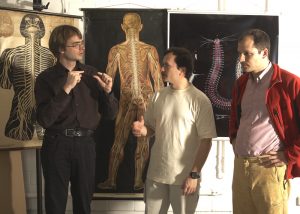
Science The rise of the central nervous system (CNS) in animal evolution has puzzled scientists for centuries. Vertebrates, insects and worms evolved from the same ancestor, but their CNSs are different and were thought to have evolved only after their lineages had split during evolution. Researchers from…
2007
science
Science Inflammatory bowel diseases, such as Crohn’s disease and Ulcerative Colitis, severely impair the lives of more than four million people worldwide. The development of effective therapies against these diseases requires an understanding of their underlying molecular mechanisms. Researchers from…
2007
science
Science Like our body every cell has a skeleton that provides it with a shape, confers rigidity and protects its fragile inner workings. The cytoskeleton is built of long protein filaments that assemble into networks whose overall architecture and fine detail can only be revealed with high resolution…
2007
science
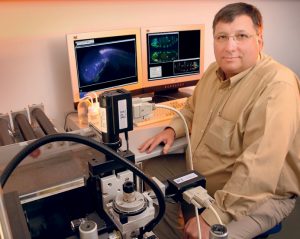
Science The European Molecular Biology Laboratory (EMBL) has developed a new computational tool that makes images obtained with cutting-edge microscopes even sharper. The technological advance and its applications are published in this week’s online issue of the journal Nature Methods. Since the…
2007
science
Science In 1918, 50 million people died during a worldwide influenza pandemic caused by mutation of a bird-specific strain of the influenza virus. Recently H5N1, another highly infectious avian strain has caused outbreaks of bird flu around the world. There is great concern that this virus might also…
2007
science
Science Liver cancer is one of the deadliest cancers worldwide; every year sees more than 400,000 new cases, and most of the victims die in less than one year. Despite extensive research, the underlying molecular mechanisms of the disease are poorly understood. A new study by researchers from the Mouse…
2007
science
Science We all know that iron deficiencies are dangerous, but also too much iron is bad for our health. Our body stores excess iron in various tissues, where it can lead to organ failure and even death if not treated before irreversible damage has occurred. Researchers from the Innsbruck Medical…
2007
science
Science Microorganisms make up more than a third of the Earth’s biomass. They are found in water, on land and even in our bodies, recycling nutrients, influencing the planet’s climate or causing diseases. Still, we know surprisingly little about the smallest beings that colonise Earth. A new…
2007
science
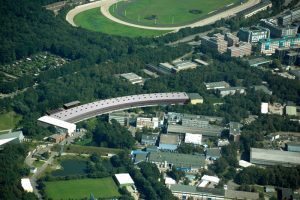
Lab Matters The German Federal Ministry for Education and Research (BMBF) has awarded 8.8 Million Euro to the Hamburg Outstation of the European Molecular Biology Laboratory (EMBL) for the construction of an Integrated Research Facility for Structural Biology at the new PETRA-III storage ring of the German…
2007
lab-matters
Lab Matters The European Commission has awarded 3.7 Million Euro under the European Union Framework 6 Programme over the next four years to a new Marie Curie Research Training Network, coordinated by Dr. Andreas Ladurner at the European Molecular Biology Laboratory (EMBL). The long molecules of DNA that carry…
2007
lab-matters
Lab Matters From today scientists will be able to access a vast collection of biomedical research and to submit their own published results for inclusion in a new online resource. Based on a model currently used by the US National Institute of Health, UK PubMed Central (UKPMC) will provide free access to a…
2007
lab-matters
Science Phone numbers, the way to work, granny’s birthday – our brain with its finite number of nerve cells can store incredible amounts of information. At the bottom of memory lies a complex network of molecules. To understand how this network brings about one of the most remarkable capacities of…
2007
science
Science A cell is a busy place. In a permanent rush hour, molecules are transported along a dynamic motorway system made up of filaments called microtubules. Microtubules constantly grow and shrink and are rapidly assembled wherever a cargo needs to go, but during this transportation process they need to…
2006
science
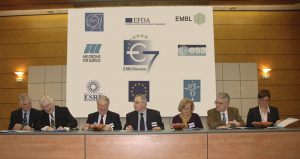
Lab Matters Today, Janez Potočnik, European Commissioner for Science and Research, received a statement of support for the European Charter for Researchers and the Code of Conduct for the Recruitment of Researchers from EIROforum. “The EIROforum partners warmly welcome this valuable initiative by…
2006
lab-matters
Lab Matters Today the European Molecular Biology Laboratory’s European Bioinformatics Institute (EMBL-EBI) launches its new, faster and easier website with an exhaustive search engine at its centre. The web interface has been streamlined on the basis of user feedback from a recent extensive…
2006
lab-matters
Lab Matters The BioModels Database, hosted by the European Molecular Biology Laboratory’s European Bioinformatics Institute (EMBL-EBI) in Cambridge, UK, has entered a formal data-exchange agreement with the Database of Quantitative Chemical Signalling (DOQCS) of the National Centre for…
2006
lab-matters
Lab Matters Today the European Molecular Biology Laboratory’s European Bioinformatics Institute (EMBL-EBI) launches CiteXplore, a new freely accessible literature resource service. Biological researchers require two crucial sources of information: scientific literature published in peerreviewed…
2006
lab-matters
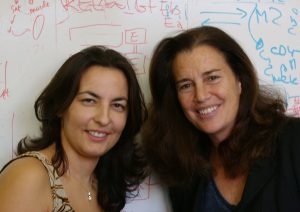
Science Muscle wasting can occur at all ages as the result of genetic defects, heart failure, spinal injury or cancer. A therapy to cure the loss of muscle mass and strength, which has a severe impact on patients’ lives, is desperately sought. Blocking a central signal molecule, researchers from the…
2006
science
Lab Matters Today, the German Minister for Education and Research, Annette Schavan, breaks ground for the new training and conference centre for the life sciences that will be built on the EMBL campus in Heidelberg. The German Ministry for Education and Research (BMBF), the Klaus Tschira…
2006
lab-matters
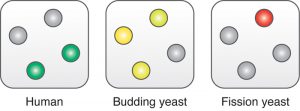
Science The life of a cell is all about growing and dividing at the right time. That is why the cell cycle is one of the most tightly regulated cellular processes. A control system with several layers adjusts when key components of the cell cycle machinery are produced, activated and degraded to make sure…
2006
science
Lab Matters Today the European Molecular Biology Laboratory (EMBL), the Centre for Genomic Regulation (CRG) and the Spanish Ministry for Education and Science (MEC) officially launch their new joint EMBL/CRG Research Unit in Systems Biology on the campus of the Barcelona Biomedical Research Park. The Spanish…
2006
lab-matters
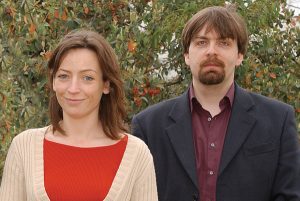
Science Blood cells have limited lifespans, which means that they must be continually replaced by calling up reserves and turning these into the blood cell types needed by the body. Claus Nerlov and his colleagues at the European Molecular Biology Laboratory (EMBL) unit in Monterotondo, Italy, in…
2006
science
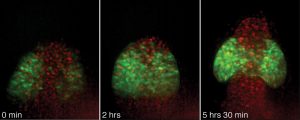
Science Eyes are among the earliest recognisable structures in an embryo; they start off as bulges on the sides of tube-shaped tissue that will eventually become the brain. Researchers from the European Molecular Biology Laboratory (EMBL) in Heidelberg have now discovered that cells are programmed to make…
2006
science
Science Cells in an embryo divide at an amazing rate to build a whole body, but this growth needs to be controlled. Otherwise the result may be defects in embryonic development or cancer in adults. Controlling growth requires that some cells divide while others die; their fates are determined by signals…
2006
science
Lab Matters Today EMBL scientists, EMBL’s commercial affiliate, EMBL Enterprise Management Technology Transfer GmbH (EMBLEM) and EMBL’s venture vehicle, EMBL Ventures GmbH, announce the foundation of Elara Pharmaceuticals GmbH, a start-up company that will translate basic research findings into new…
2006
lab-matters
Science Depression, coordination and speech problems, muscle weakness and disability are just a few of the symptoms of Multiple Sclerosis (MS). Researchers from the Mouse Biology Unit of the European Molecular Biology Laboratory (EMBL) in Italy and the Department of Neuropathology at the Faculty of…
2006
science
Lab Matters Scientists will be able to access a vast collection of biomedical research at the touch of a button thanks to a major new initiative that aims to promote the free transfer of ideas in a bid to speed up scientific discovery. Based on a model currently used in the United States, UK PubMed Central…
2006
lab-matters
Lab Matters In the early days of X-ray crystallography obtaining a three-dimensional model of a protein required wire models, screws, bolts and years of tedious calculations by hand. Today macromolecular models are built by computers – thanks to sophisticated software and in particular a package called…
2006
lab-matters
Lab Matters Croatia has officially joined the European Molecular Biology Laboratory (EMBL) as the organisation’s 19th Member State. The Croatian parliament ratified its membership after EMBL’s council had accepted the country’s application. “Joining EMBL is a very important step…
2006
lab-matters
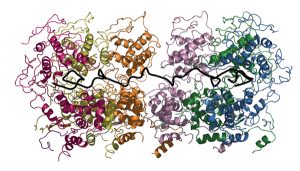
Science Ebola, measles and rabies are serious threats to public health in developing countries. Despite different symptoms all of the diseases are caused by the same class of viruses that unlike most other living beings carry their genetic information on a single RNA molecule instead of a double strand of…
2006
science
Science Tuberculosis remains one of the deadliest threats to public health. Every year two million people die of the disease, which is caused by the microorganism Mycobacterium tuberculosis. Roughly one third of the world’s population is infected and more and more bacterial strains have developed…
2006
science
Lab Matters Today the European Molecular Biology Laboratory’s (EMBL) European Bioinformatics Institute (EBI), the Swiss Institute for Bioinformatics (SIB), the University of Cologne, Germany, and the European Patent Office launch FELICS (Free European Life-science Information and Computational Services).…
2006
lab-matters
Lab Matters EMBOSS, the European Molecular Biology Open Software Suite, has received a vital funding boost from the UK Biotechnology and Biological Sciences Research Council (BBSRC) that will guarantee its continued maintenance under an open source license for the next three years. This ends two years of…
2006
lab-matters
Lab Matters Today three research organisations announce the merging of their expertise to fight cardiovascular diseases, which are among the most common health problems and causes of death in the world. The Magdi Yacoub Institute (MYI) at the UK’s Harefield Heart Science Centre, Imperial College London,…
2006
lab-matters
Events Today the network of excellence for Biology and Pathology of the Malaria Parasite (BioMalPar), will bring together the world’s elite in the field of Malaria research at the European Molecular Biology Laboratory (EMBL) in Heidelberg. At the second annual BioMalPar conference, organised jointly…
2006
events
Lab Matters Science is moving more rapidly than ever; one groundbreaking discovery chases the next at an incredible speed. School teachers have trouble keeping up with the pace, and many pupils call science classes “boring”. Today, Europe’s major research organisations launch Science in…
2006
lab-matters
Science Recent research at the European Molecular Biology Laboratory (EMBL) reveals new insights into how cells achieve equality between the sexes. A new link discovered between the membrane surrounding the nucleus and the male X-chromosome in fruit flies may play a crucial role in determining how active…
2006
science
Science In 1870 the German scientist Ernst Haeckel mapped the evolutionary relationships of plants and animals in the first ‘tree of life’. Since then scientists have continuously redrawn and expanded the tree adding microorganisms and using modern molecular data, yet, many parts of the tree…
2006
science
Science A detailed structural picture of a molecule that plays a key role in activating the Epstein Barr Virus in human cells has now been obtained by researchers at the European Molecular Biology Laboratory (EMBL) and the Institut de Virologie Moléculaire et Structurale (IVMS), associated with the…
2006
science
Science Today researchers in Germany announce they have finished the first complete analysis of the “molecular machines” in one of biology’s most important model organisms: S. cerevisiae (baker’s yeast). The study from the biotechnology company Cellzome, in collaboration with the…
2006
science
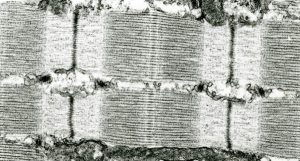
Science Imagine grabbing two snakes by the tail so that they can’t wriggle off in opposite directions. Scientists at the Hamburg Outstation of the European Molecular Biology Laboratory (EMBL) and collaborators from King’s College in London have now discovered that something similar happens to a…
2006
science
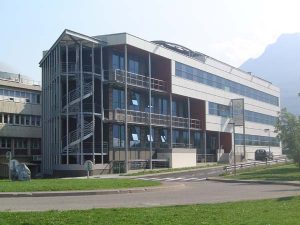
Lab Matters On Friday, 13 January 2006, the new Carl-Ivar Brändén Building (CIBB) will be inaugurated on the Polygone Scientifique Campus in Grenoble, France. The CIBB will be operated as a collaboration between major international and national partners based in Grenoble and is a further step in the…
2006
lab-matters
Science Researchers at the International Centre for Genetic Engineering and Biotechnology (ICGEB) in India and a unit of the European Molecular Biology Laboratory (EMBL) in France have made a key discovery about a molecule that helps the malaria parasite infect human cells. India is one of the countries…
2005
science
Lab Matters In the December 6 issue of Nature Biotechnology, scientists from 14 different organizations around the world, including the EMBL-European Bioinformatics Institute, propose a new quality standard for biochemical models. MIRIAM [for Minimum information requested in the annotation of biochemical…
2005
lab-matters
Science Species evolve at very different rates, and the evolutionary line that produced humans seems to be among the slowest. The result, according to a new study by scientists at the European Molecular Biology Laboratory [EMBL], is that our species has retained characteristics of a very ancient ancestor…
2005
science
Lab Matters Today the European Molecular Biology Laboratory (EMBL) opens a new highthroughput crystallization facility at its Outstation located on the campus of the German Synchrotron Radiation Facility (DESY) in Hamburg, Germany. The facility, made possible by major funds from the German Ministry for Science…
2005
lab-matters
Science Most of what happens in cells is the work of machines that contain dozens of molecules, chiefly proteins. With the completion of human and other genomes, researchers now have a nearly complete ‘parts list’ of such machines; what’s lacking is the manual telling where all the pieces…
2005
science
Science Scientists at the Universities of Heidelberg and Ulm and a unit of the European Molecular Biology Laboratory (EMBL) in Monterotondo, Italy, have discovered that a specific signal within brain cells may determine whether they live or die after a stroke. Their study, published online (November 13) by…
2005
science
Lab Matters The Commission of the European Union has awarded EUR 9 million over five years for a new Network of Excellence that will make computational systems biology accessible to bench scientists throughout Europe and beyond. ENFIN, which stands for ‘Experimental Network for Functional…
2005
lab-matters
Science Mutations in genes are the basis of evolution, so we owe our existence to them. Most mutations are harmful, however, because they cause cells to build defective proteins. So cells have evolved quality control mechanisms that recognize and counteract genetic mistakes. Now scientists of the Molecular…
2005
science
Lab Matters The European Commission has selected the EBI to coordinate a project that will stimulate and explore synergies between bioinformatics (the science of storing, retrieving and analysing large amounts of biological information) and medical informatics (the science of processing, sharing and using…
2005
lab-matters
Science Scientists at the European Molecular Biology Laboratory (EMBL) in Heidelberg and the Institute of Biomedical Research of the Parc Científic de Barcelona (IRB-PCB) have now added key evidence to claims that some types of cancer originate with defects in stem cells. The study, reported this week in…
2005
science
Lab Matters The European Bioinformatics Institute and Flanders Interuniversity Institute for Biotechnology (VIB) – Ghent University have launched the PRoteomics IDEntifications database (PRIDE). PRIDE allows researchers who work in the field of proteomics – the large-scale study of proteins – to…
2005
lab-matters
Lab Matters The executive teams of five major molecular interaction databases announced today the signing of an agreement to share curation efforts and exchange completed records through a mechanism known as the International Molecular Exchange (IMEx) consortium. IMEx will provide a network of stable,…
2005
lab-matters
Science Achieving equality between the sexes can be a challenge even for single cells. Since evolution began removing bits of male DNA to create the ‘Y’ chromosome, males have had a single copy of certain key genes on the X chromosome, whereas females have two. Normally this would lead females…
2005
science
Lab Matters The world’s three leading public repositories for DNA and RNA sequence information have reached 100 gigabases (100,000,000,000 bases; the ‘letters’ of the genetic code) of sequence. Thanks to their data exchange policy, which has paved the way for the global exchange of many types…
2005
lab-matters
Lab Matters The first rate research from the Molecular Medicine Partnership Unit (MMPU) is now set to continue for the long-term. The European Molecular Biology Laboratory (EMBL) and the Medical Faculty of University of Heidelberg, who formed the joint venture in 2002, have announced their plans to initiate a…
2005
lab-matters
Science Microtubules need a helping hand to find chromosomes in dividing egg cells, scientists have discovered. Although it was generally accepted that microtubules act alone as the cellular ropes to pull chromosomes into place, a new study by researchers at the European Molecular Biology Laboratory (EMBL)…
2005
science
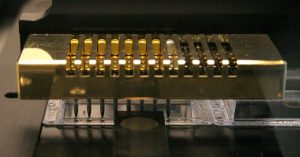
Lab Matters A systematic search through human genes has begun at the European Molecular Biology Laboratory (EMBL) in Heidelberg, Germany. Working within the MitoCheck consortium that includes 10 other institutes throughout Europe, the EMBL scientists will silence all human genes, one-by-one, to find those…
2005
lab-matters
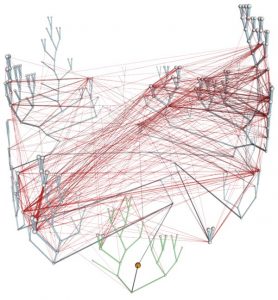
Science EBI researchers have changed our view of 4 billion years of microbial evolution. Christos Ouzounis and colleagues have gained intriguing quantitative insights into how gene families are transferred, not only ‘vertically’ through passage from one organism to its progeny, but also…
2005
science
Science Living organisms need to sense the amount of energy that is available to them and regulate the activity of their genes accordingly. Scientists have made the unexpected finding that a histone protein, which wraps DNA into tight bundles and regulates gene activity, can bind a small molecule produced…
2005
science
Lab Matters The European Bioinformatics Institute (EMBL-EBI) has received a big boost from The Wellcome Trust, the Medical Research Council (MRC) and the Biotechnology and Biological Sciences Research Council (BBSRC), who have given funds to expand the EBI site in Hinxton, Cambridgeshire, UK. The new…
2005
lab-matters
Lab Matters Dr. Iain Mattaj today took over the leadership of the European Molecular Biology Laboratory [EMBL], a prominent basic research and training institute with laboratories in France, Germany, Italy and the UK. “The pace of progress in the life sciences is remarkable. I see my job as ensuring that…
2005
lab-matters
Science Instead of sequencing the genome of one organism, why not sequence a drop of sea water, a gram of farm soil or even a sunken whale skeleton? Scientists at the European Molecular Biology Laboratory (EMBL) in Heidelberg and their US collaborators have done just that, and the result is a new…
2005
science
Science Today sees the launch of BioModels, the world’s first database of annotated biological models. BioModels is the result of a collaboration led by the European Bioinformatics Institute (UK) and the SBML Team, an international group that develops opensource standards to describe biological…
2005
science

Lab Matters A novel high-tech microscope will be brought to the marketplace, giving laboratories everywhere fascinating new insights into living organisms. EMBLEM Technology Transfer GmbH (EMBLEM), the commercial entity of the European Molecular Biology Laboratory (EMBL), announced today that it has signed a…
2005
lab-matters
Lab Matters The International Society for Computational Biology has named two scientists from the European Bioinformatics Institute as the winners of its awards for 2005. Janet Thornton wins the Senior Scientist Accomplishment Award while the Overton Prize goes to Ewan Birney. Thomas Lengauer, the ISCB’s…
2005
lab-matters
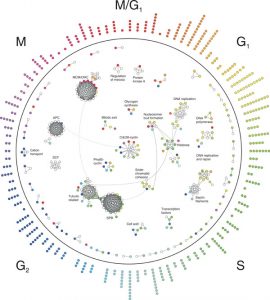
Science, Science & Technology Most things that happen in the cell are the work of ‘molecular machines’ – complexes of proteins that carry out important cellular functions. Until now, scientists didn’t have a clear idea of when proteins form these machines – are these complexes pre-fabricated or put…
2005
sciencescience-technology
Lab Matters The Commission of the European Union has awarded 8.3 million Euro to a pan-European task force who will improve access to biological information for scientists throughout and beyond Europe. The EMBRACE Network of Excellence, which encompasses computational biologists from 17 institutes in 11…
2005
lab-matters
Science, Science & Technology One of the most basic yet least understood processes in our bodies is how cells crawl along tissues. This behavior is essential to the formation of an embryo and other processes, but it must be tightly controlled. A disturbance can lead to the spread of cancer cells or diseases like Spina…
2005
sciencescience-technology
No matching posts found
Looking for past print editions of EMBLetc.? Browse our archive, going back 20 years.
EMBLetc. archive